VENTURA RIVER WATERSHED INITIATIVE
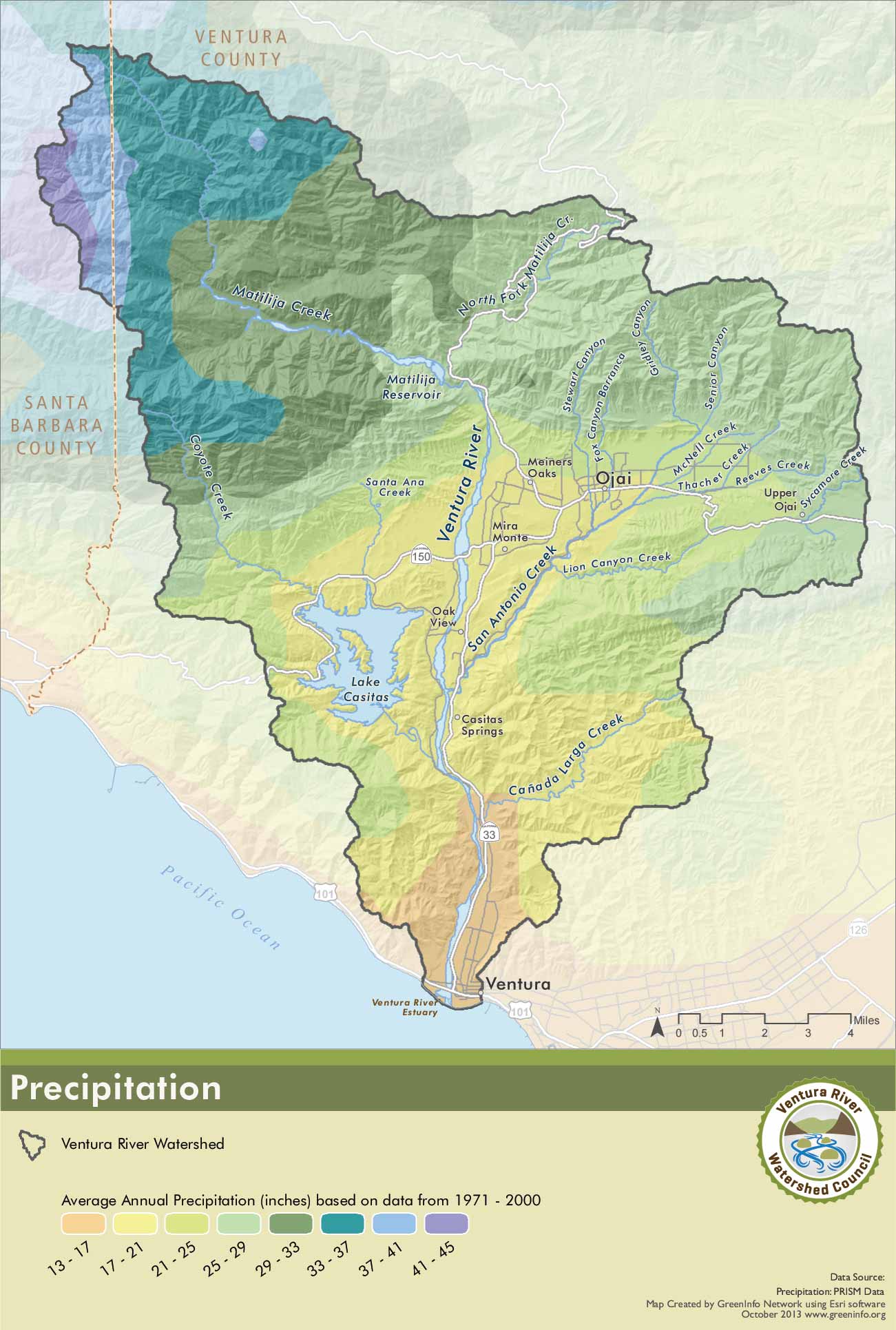
Water Management Program for the Ventura River Watershed
Dietrick Institute for Applied Insect Ecology California & People and Water, Slovakia Michal Kravčík, Jan Dietrick, Brett Levin, Russ Speer, Danka Kravčíková, Peter Bujňák
Current Status of the Ventura River Watershed
The Ventura River Watershed has typical mountainous dry weather and suffers from water scarcity and frequent flooding. The average annual rainfall is 21.24 inches. The summer half of the year has extremely poor precipitation (May – October), when the rainfall total amounts to an average of 1.85 inches, which is only 8.7% of the annual rainfall total. By contrast 46% of the yearly rainfall occurs January to February; these two months suffer the greatest flood risks. The precipitation timing corresponds to the sea climate where the lack of precipitation in the period of the highest temperatures in the area is due to overheating of the Earth’s surface.

The landscape is very dry and damaged by erosion. A large part of the precipitation in the rainy period, estimated at four inches (100 mm), flows from the water basin to the sea without any infiltration, thus reducing the water balance in the area.
Long-term damage to the landscape reduces not only the water supply in the area but also increases the overheating of the landscape, which further reduces the rainfall in the area. Without corrective measures, future extreme floods fluctuating with drought can be expected more often.
We estimate, that from the damaged area of the Ventura River Watershed about four inches of rainwater each year flows to the sea without any use. This is about 47400 ac ft of water in the Ventura watershed, with an area of 226 sq mi. The widespread retention of this volume of rainwater in the Ventura river watershed would greatly enhance the landscape and would reintroduce a small water cycle in the area so that the rainfall is more frequent and gentler throughout the catchment area. Water resources would increase, flood risks would be reduced, biodiversity would be enhanced, economic prosperity would be enhanced, and climate would improve.
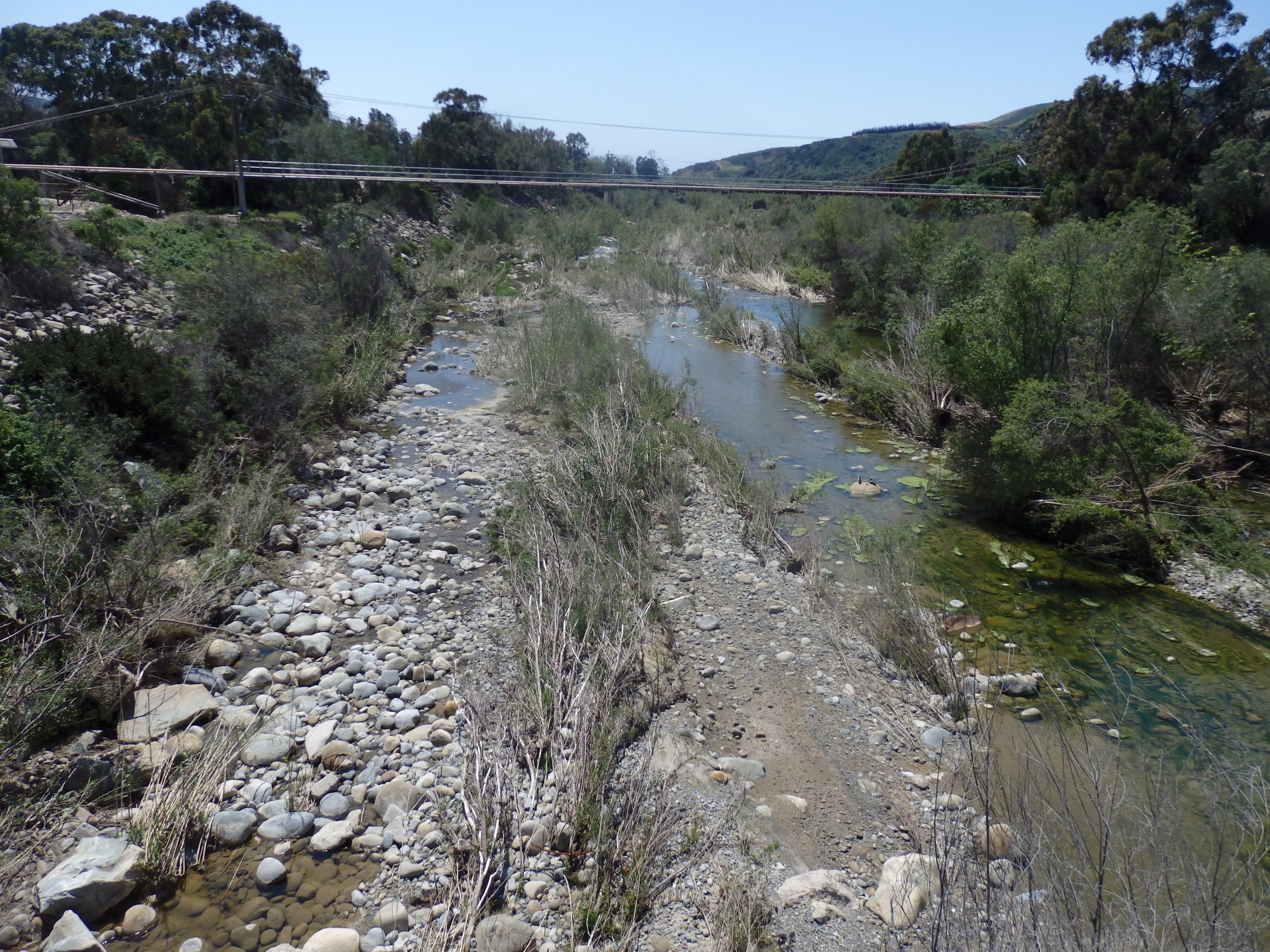
If what we term old water paradigm (OWP) management continues there is little opportunity of stopping the decline of the region. The OWP principle of rapid rainwater drainage contributes to a faster drying out of the entire catchment area, leading to greater dependence of the region’s economy on investing in costly water management solutions that ultimately do not eliminate the causes of water scarcity in the area.
Applying the New Water Paradigm (NWP) can not only stop this dangerous trend but can also start healing processes. Some improvements would manifest within one year. It is possible to completely revitalize the valley in a relatively short period of time (10 years) in order to regenerate rain and restore water resources in the area, while mitigating flood and drought risks. It is realistic to expect softer rain so that vegetation regeneration, water resources, biodiversity and mitigation of weather variations will multiply.
If what we term old water paradigm (OWP) management continues there is little opportunity of stopping the decline of the region. The OWP principle of rapid rainwater drainage contributes to a faster drying out of the entire catchment area, leading to greater dependence of the region’s economy on investing in costly water management solutions that ultimately do not eliminate the causes of water scarcity in the area.
Applying the New Water Paradigm (NWP) can not only stop this dangerous trend but can also start healing processes. Some improvements would manifest within one year. It is possible to completely revitalize the valley in a relatively short period of time (10 years) in order to regenerate rain and restore water resources in the area, while mitigating flood and drought risks. It is realistic to expect softer rain so that vegetation regeneration, water resources, biodiversity and mitigation of weather variations will multiply.
What Needs to Change
Current rainwater management in the area is based on the assumption that rain water is an inconvenience we need to get rid of as quickly as possible. We need to manage rainwater as a precious resource that supports life processes in ecosystems. Only then can we expect sustainable prosperity and permanent restoration of natural resources.
The current state of damage to the landscape in the Ventura River Watershed
Partially wooded slopes of the catchment area.



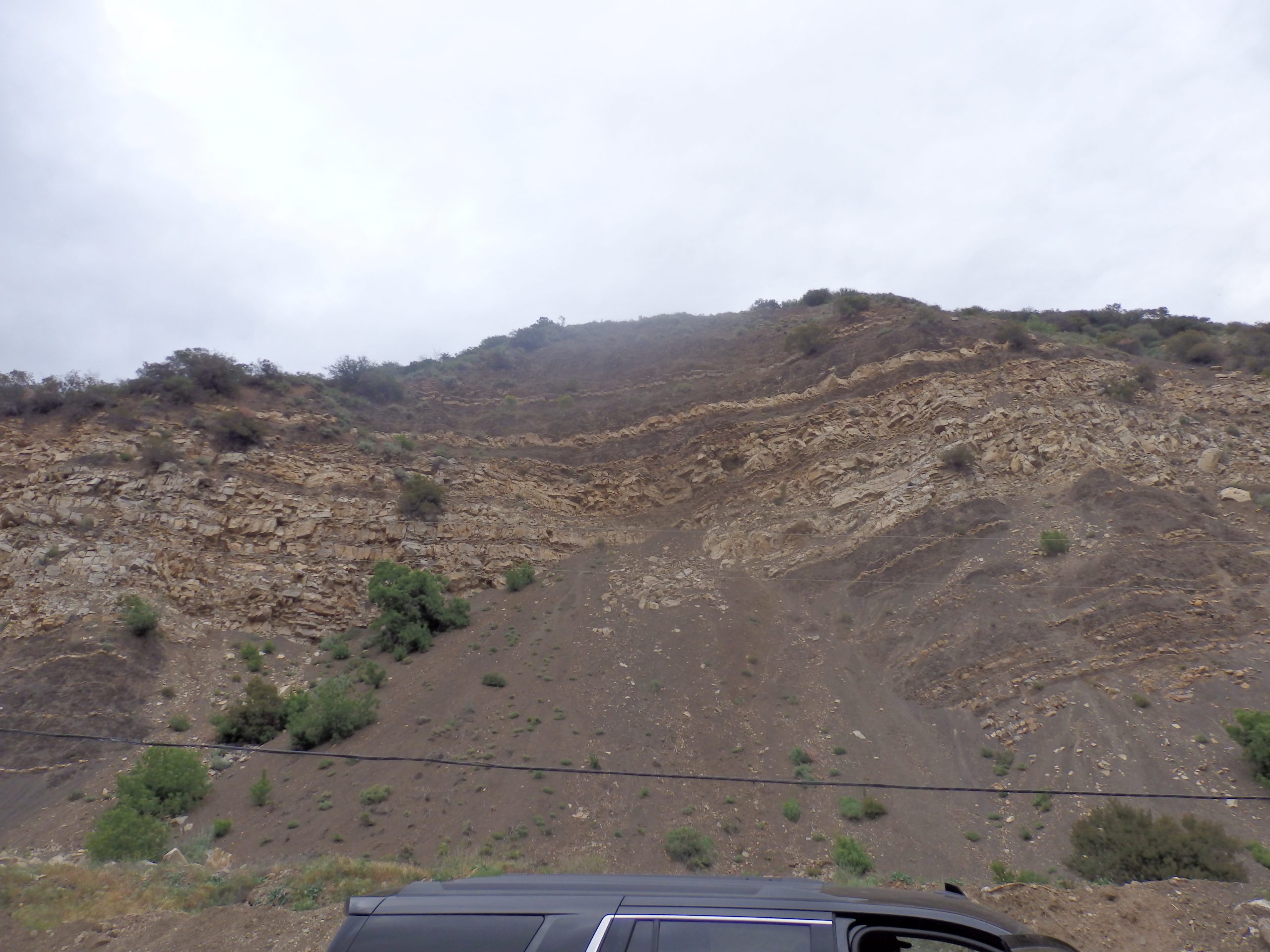
In rocky gullies intense precipitation brings rapid drainage of rainwater and soil erosion. Chronic drought and soil degradation limit the growth of vegetation.


To protect roads, drainage pits channel rainwater to the nearest stream.

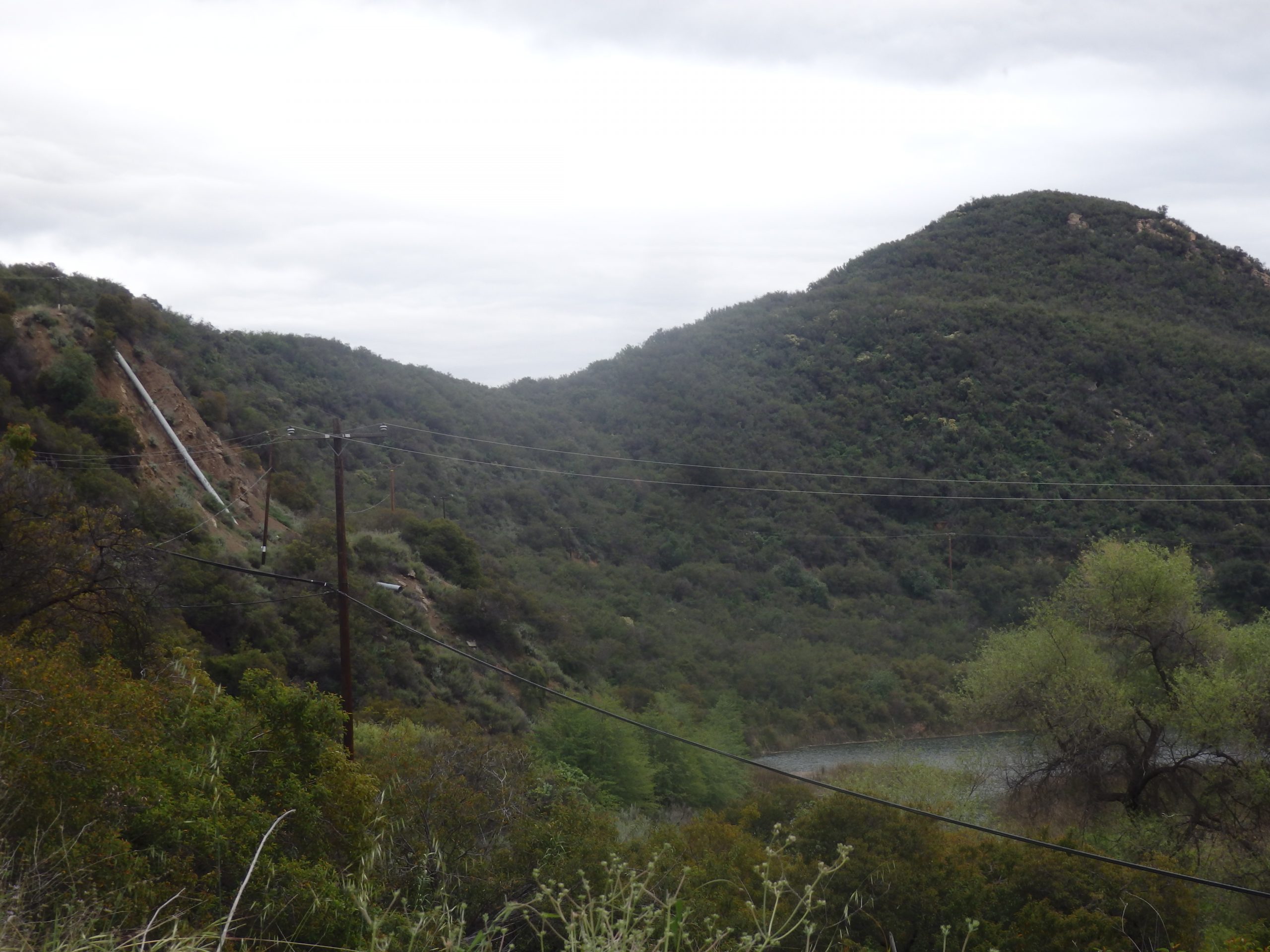
To reduce the erosion risk of rainwater which flows off roads, rainwater is often collected into pipelines and transported to locations downslope.
- Management of rainwater in the agricultural landscape
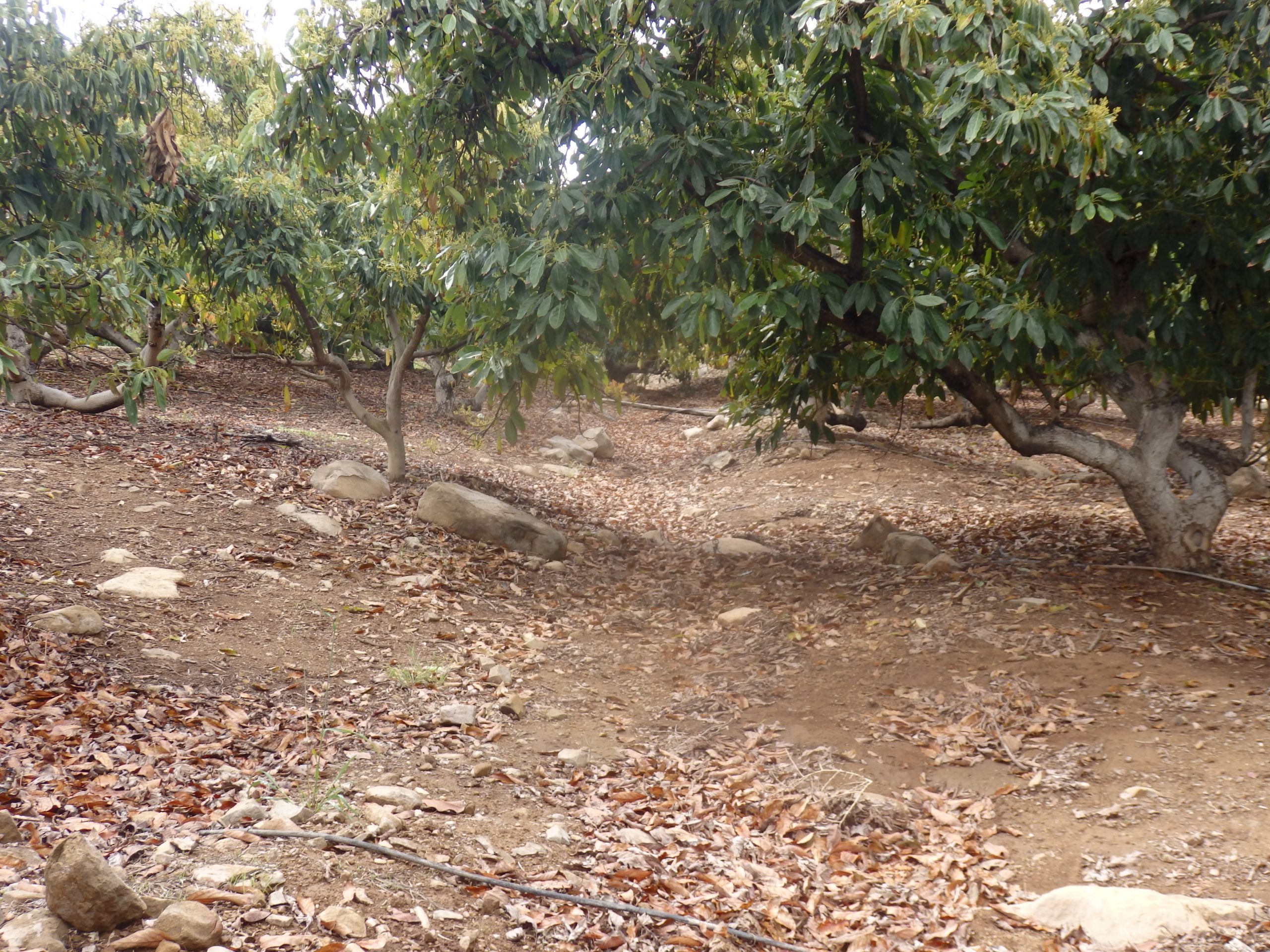
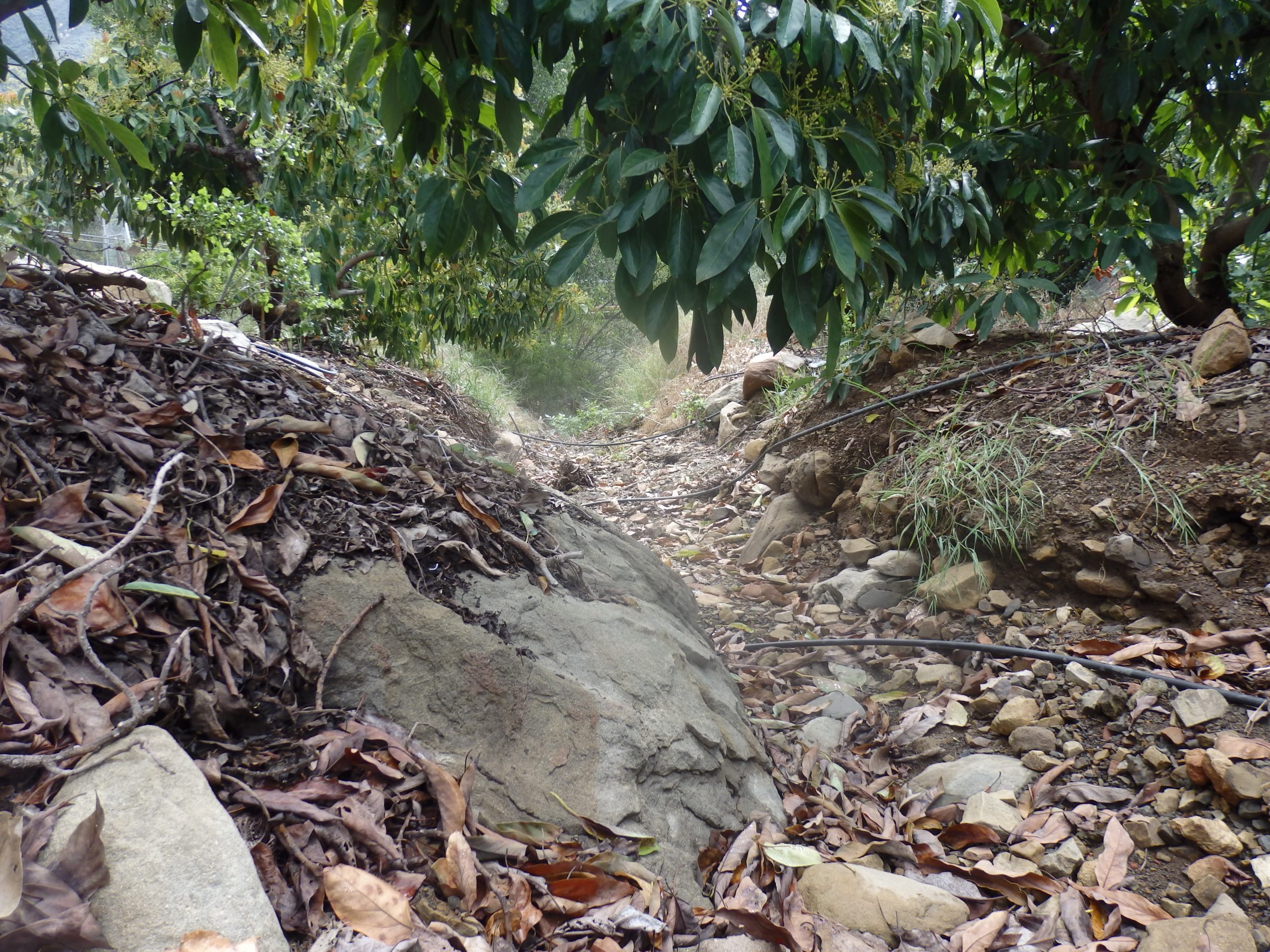
Farms growing citrus fruits on farms partially depend on irrigation from rainwater obtained from the adjacent mountain slopes during heavy downpours. The orchards depend most heavily on water pumped from aquifers.
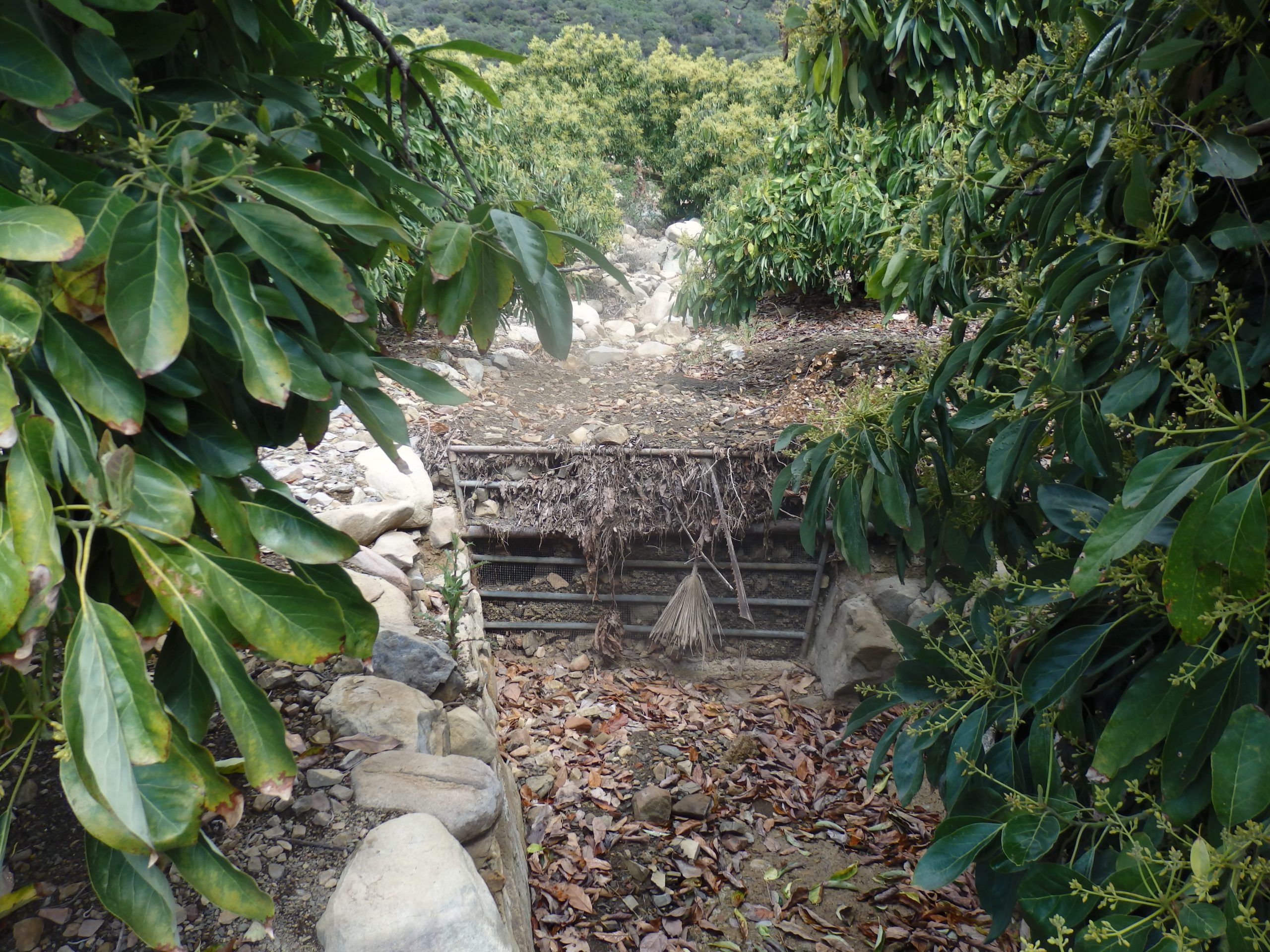
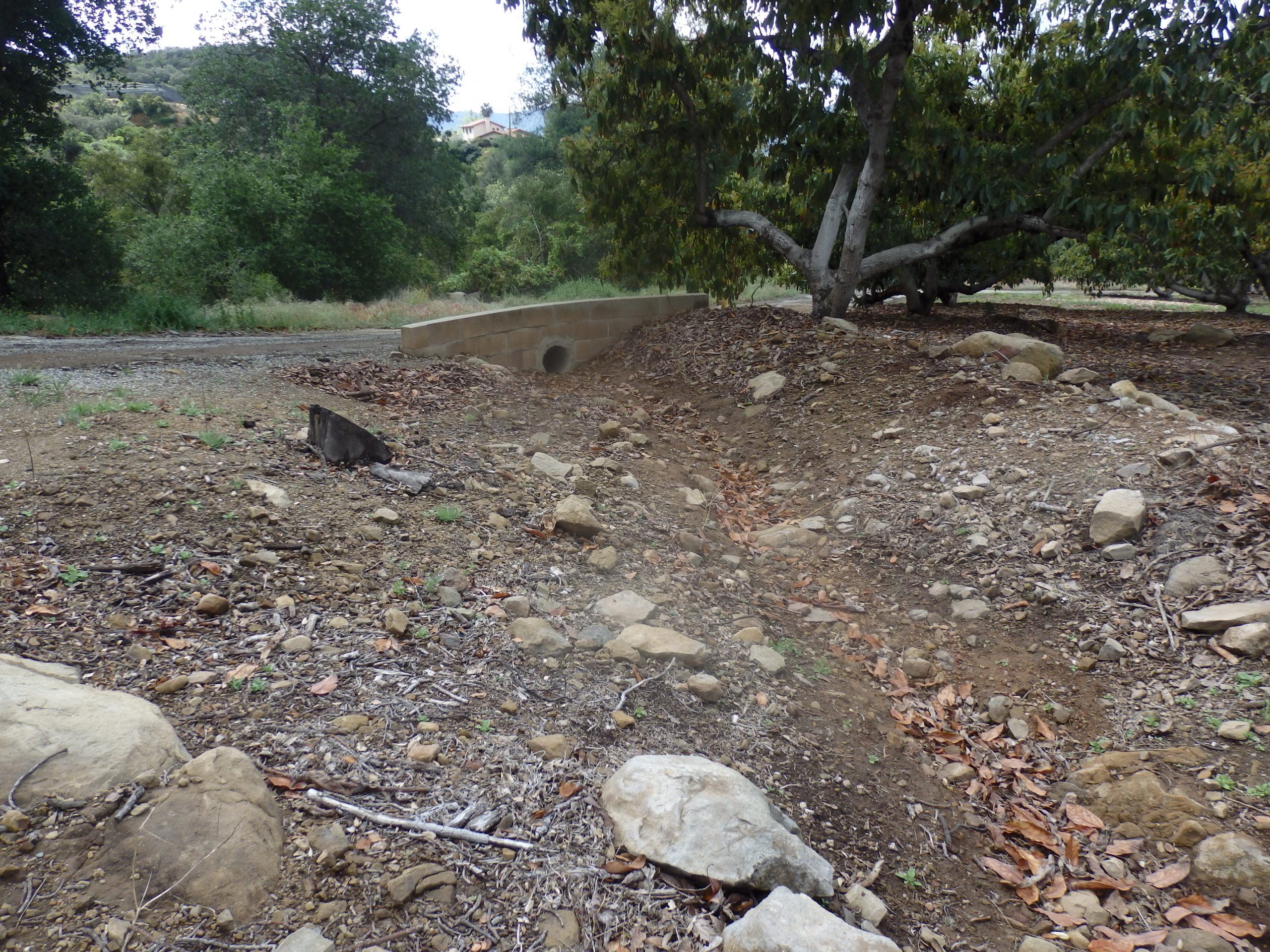
Erosive activity confirms that changes in water management are needed.
Erosive activity confirms that changes in water management are needed.

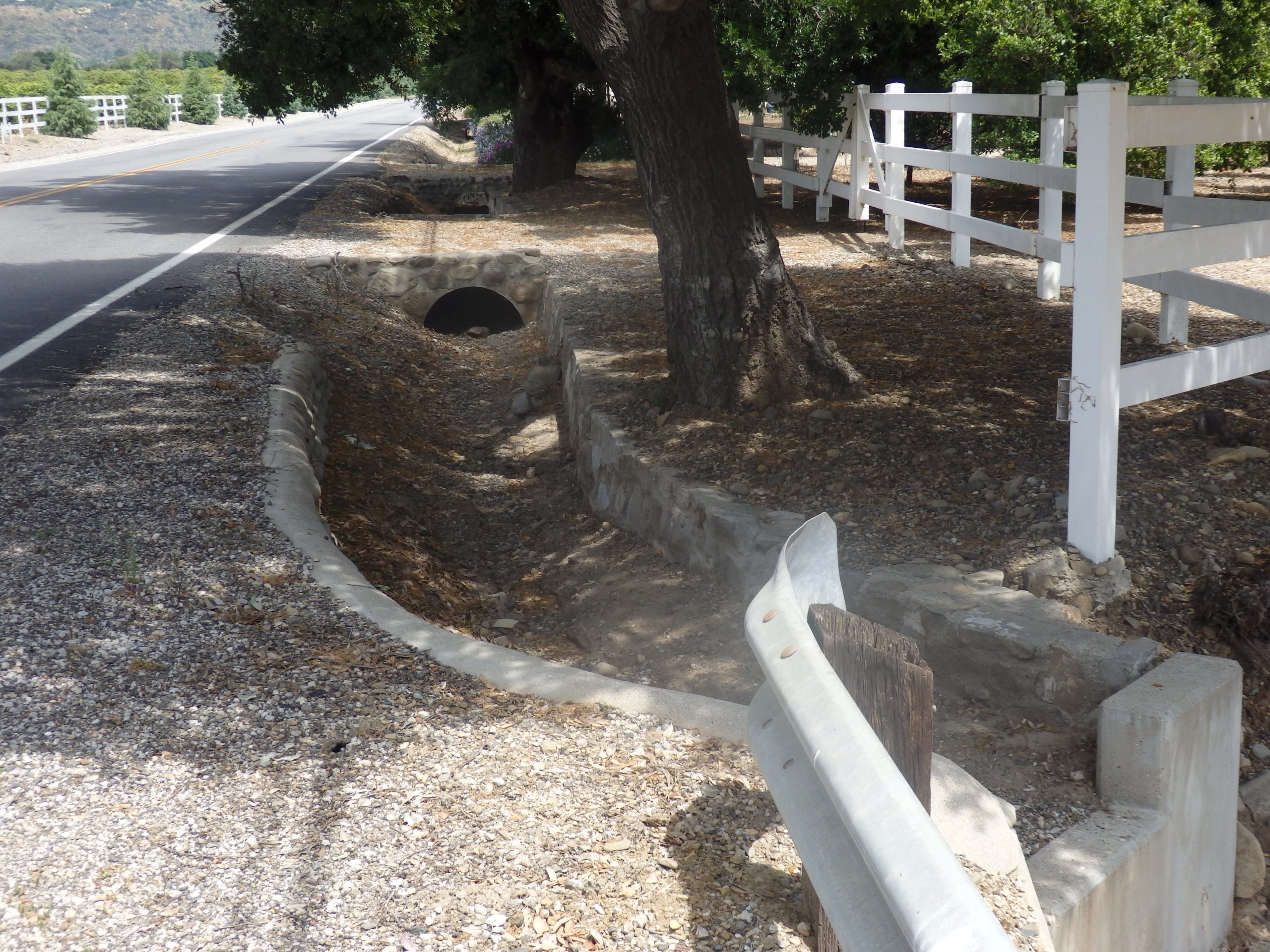
Dimensions of water passage channels confirm that significant flows occur. The water available from rainwater harvesting can significantly contribute to the stabilization of agricultural water supplies by changing to the principles of the New Water Paradigm.
- The Ventura River and Its Tributaries
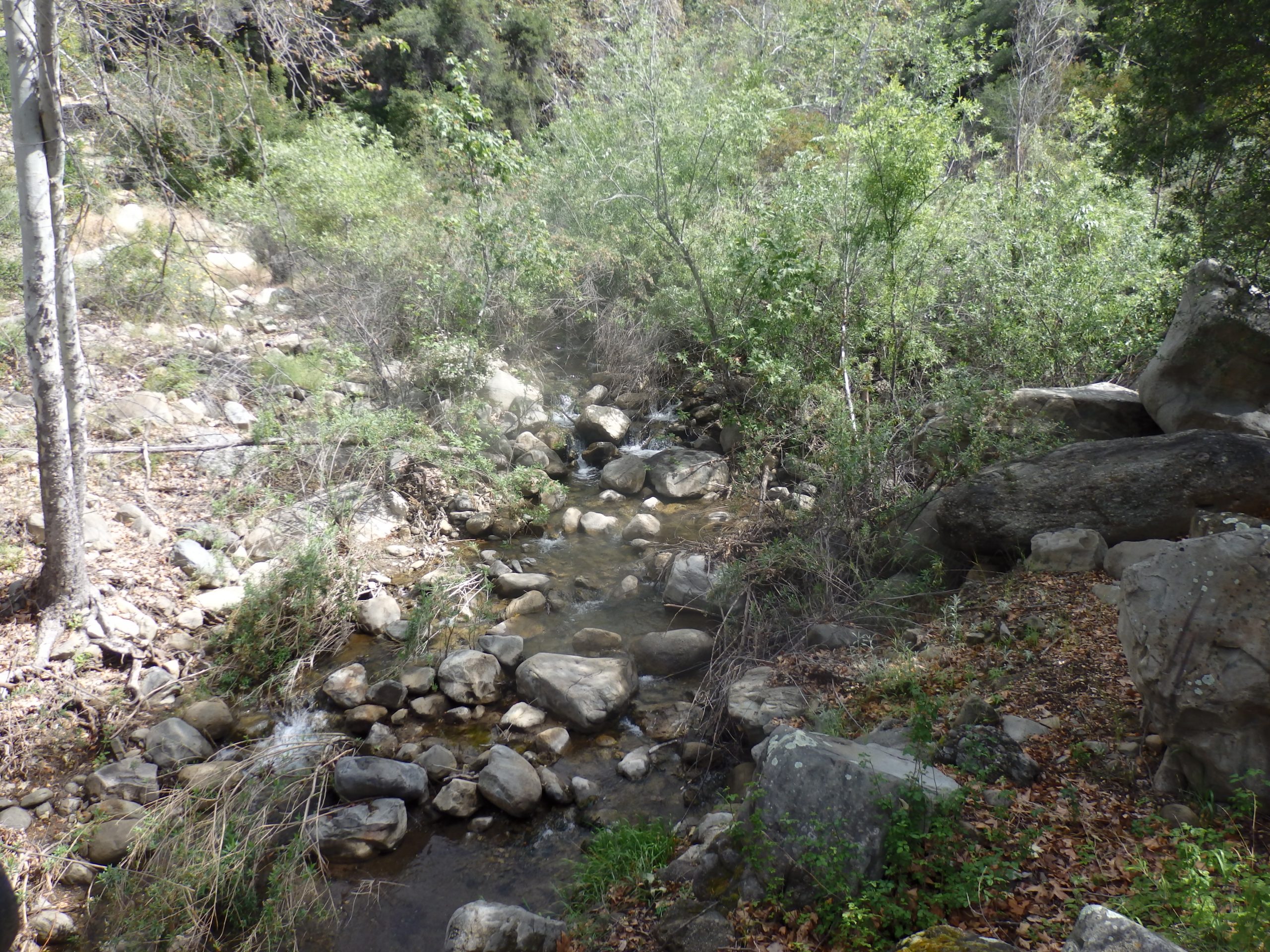
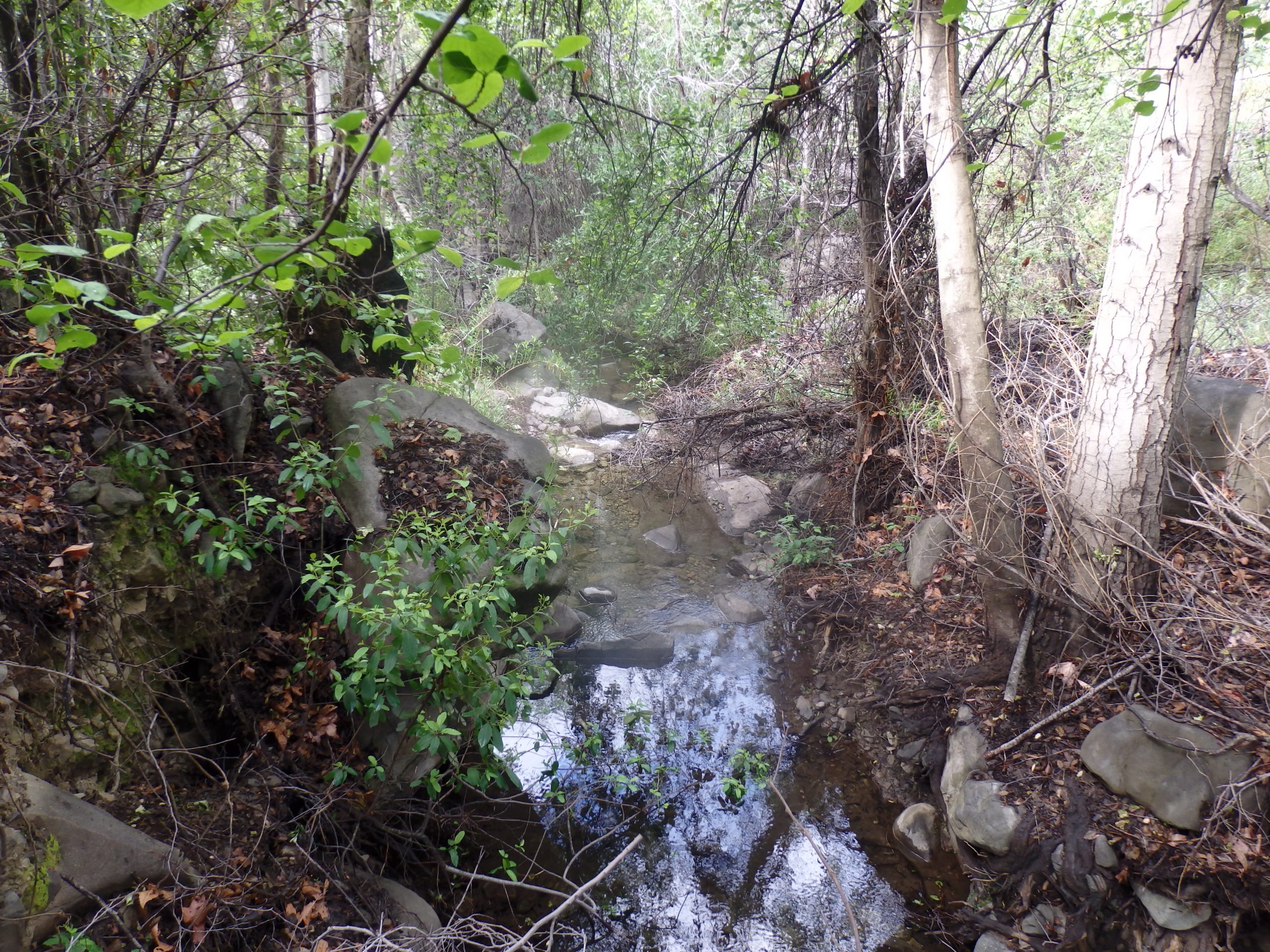
Damage to waterway inflows into the Ventura River confirms that there are significant erosive processes occuring
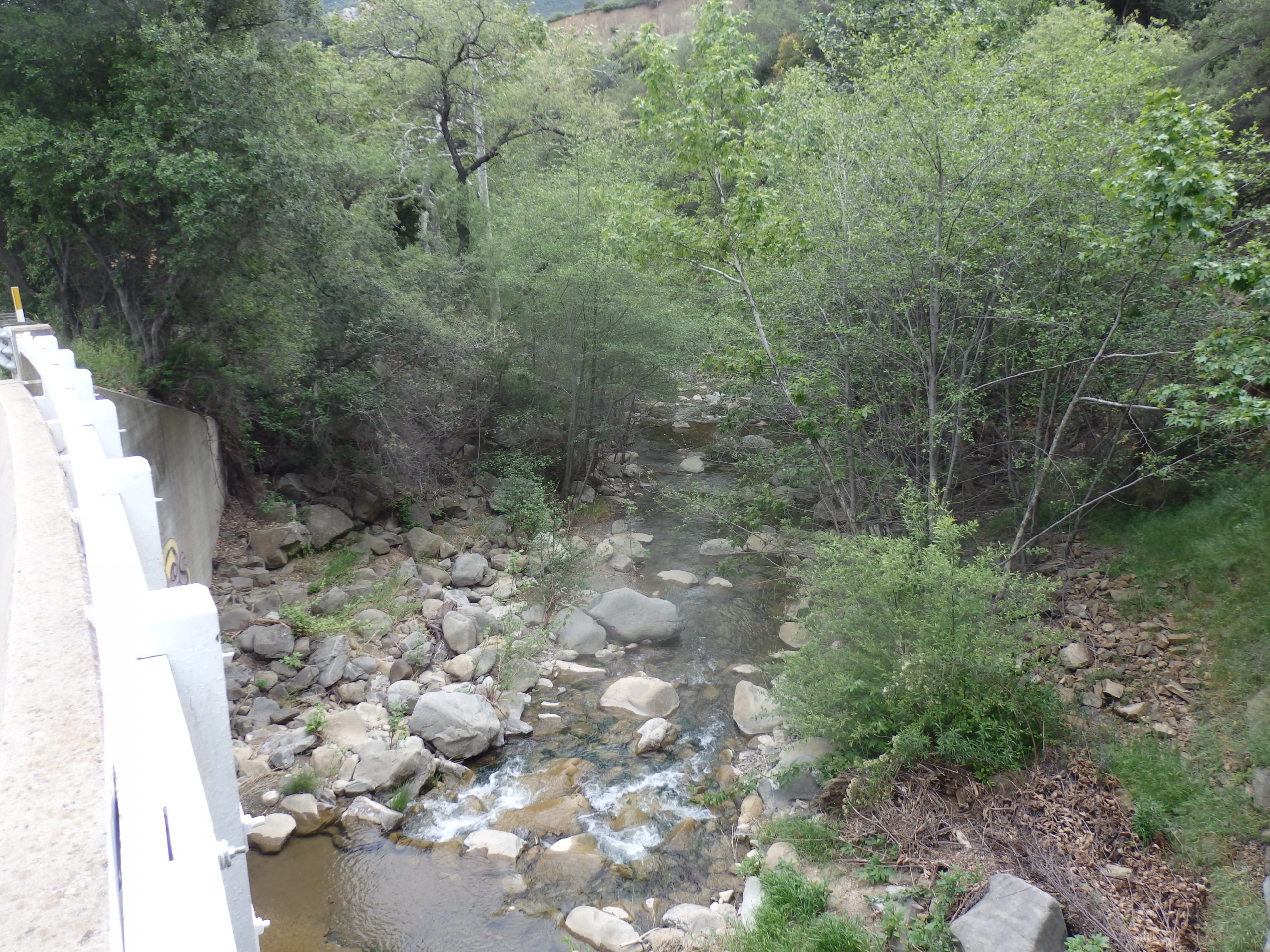
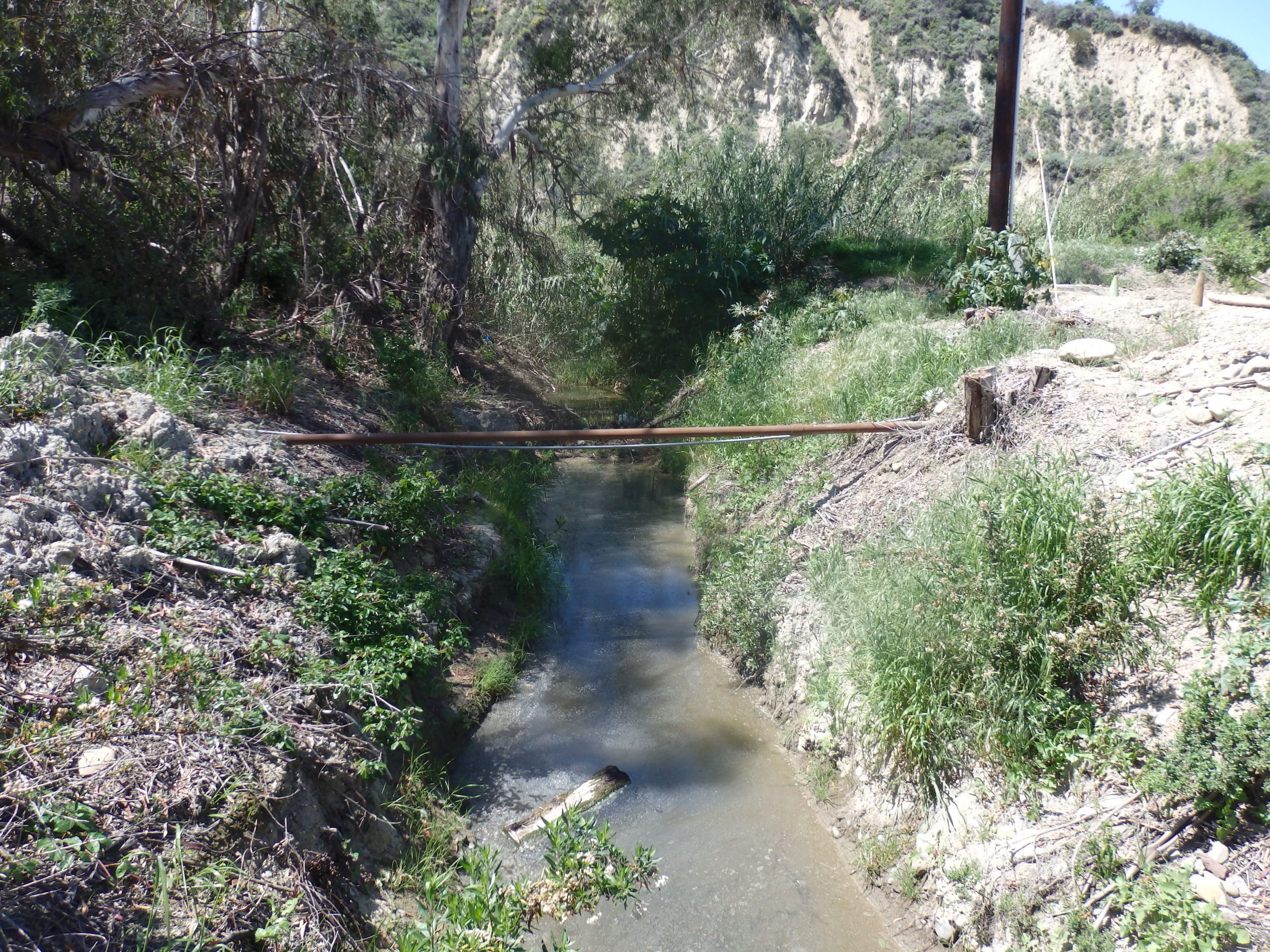
In riverbeds with transport of material through the Ventura River Waterheds
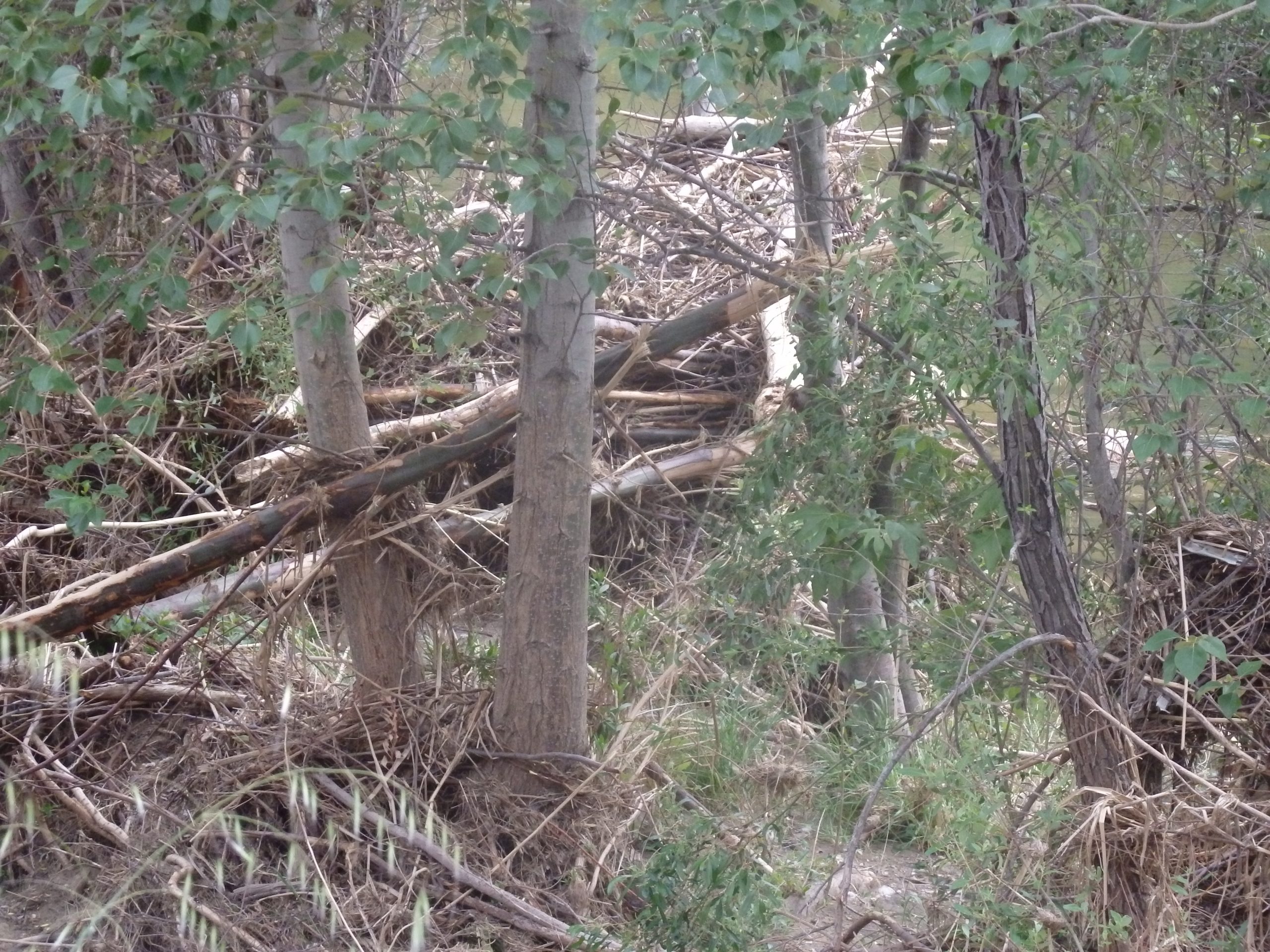
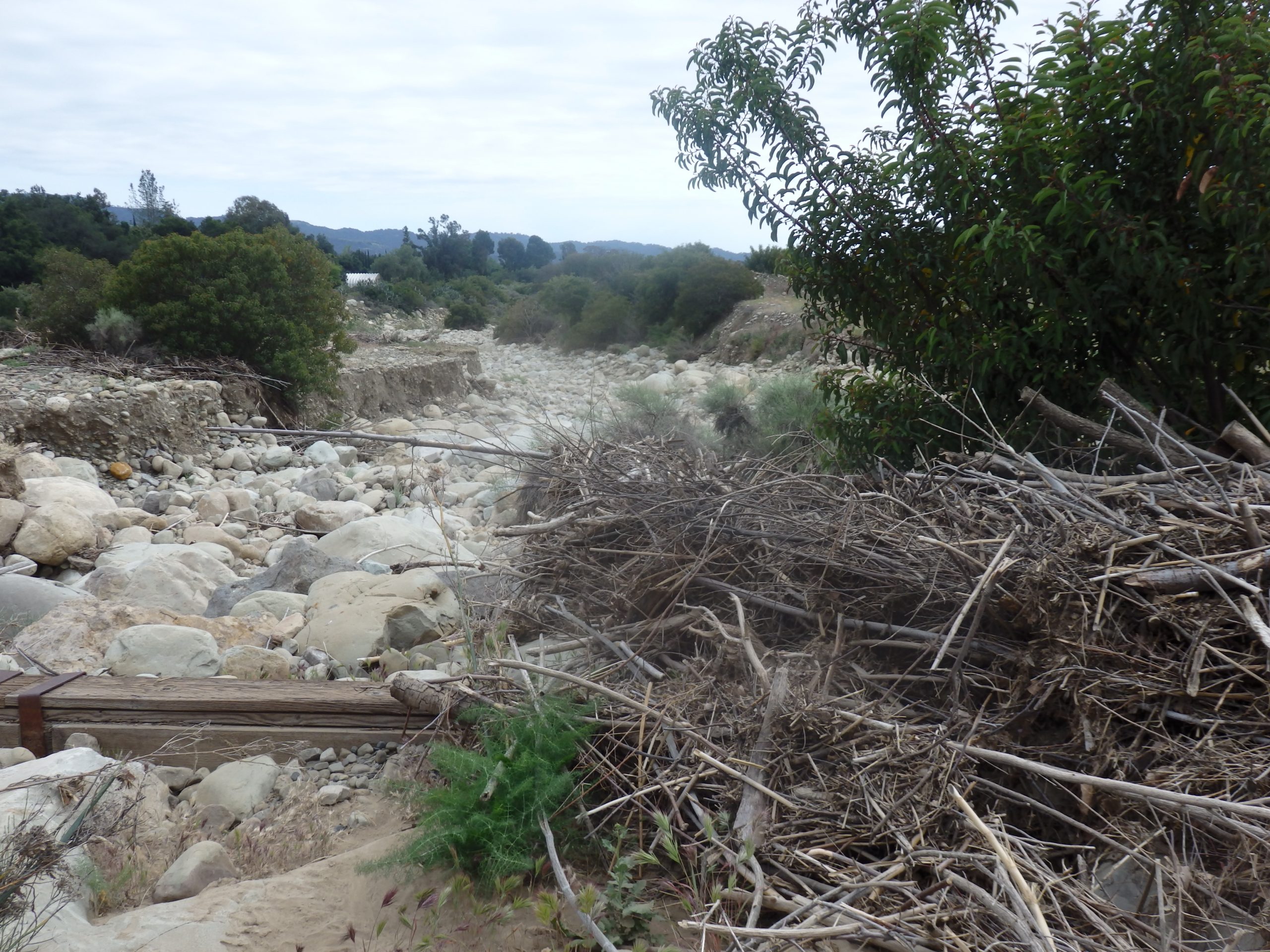
Part of the trough-forming processes is the transport of biomass from undercut slopes of shorelines.
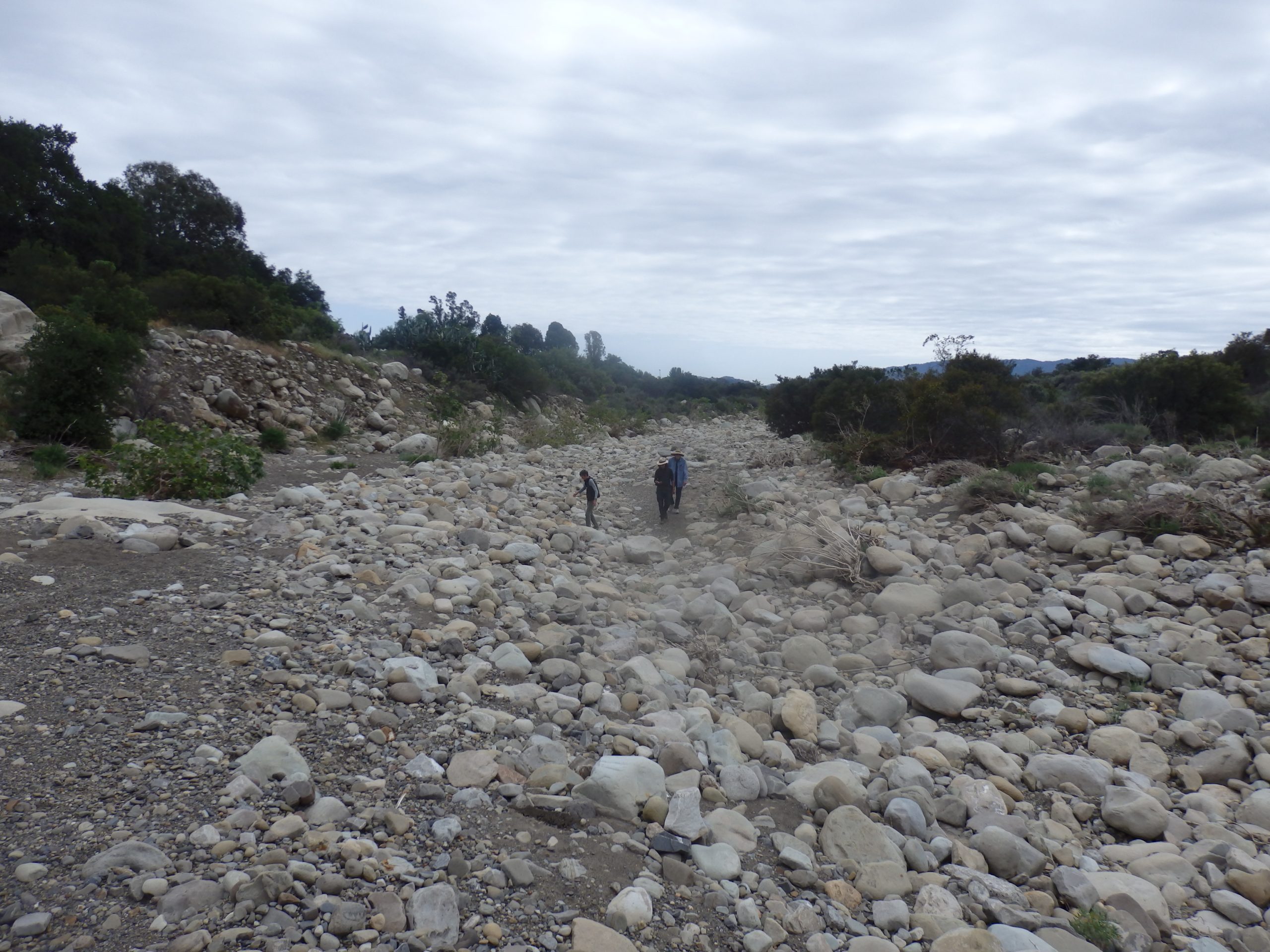
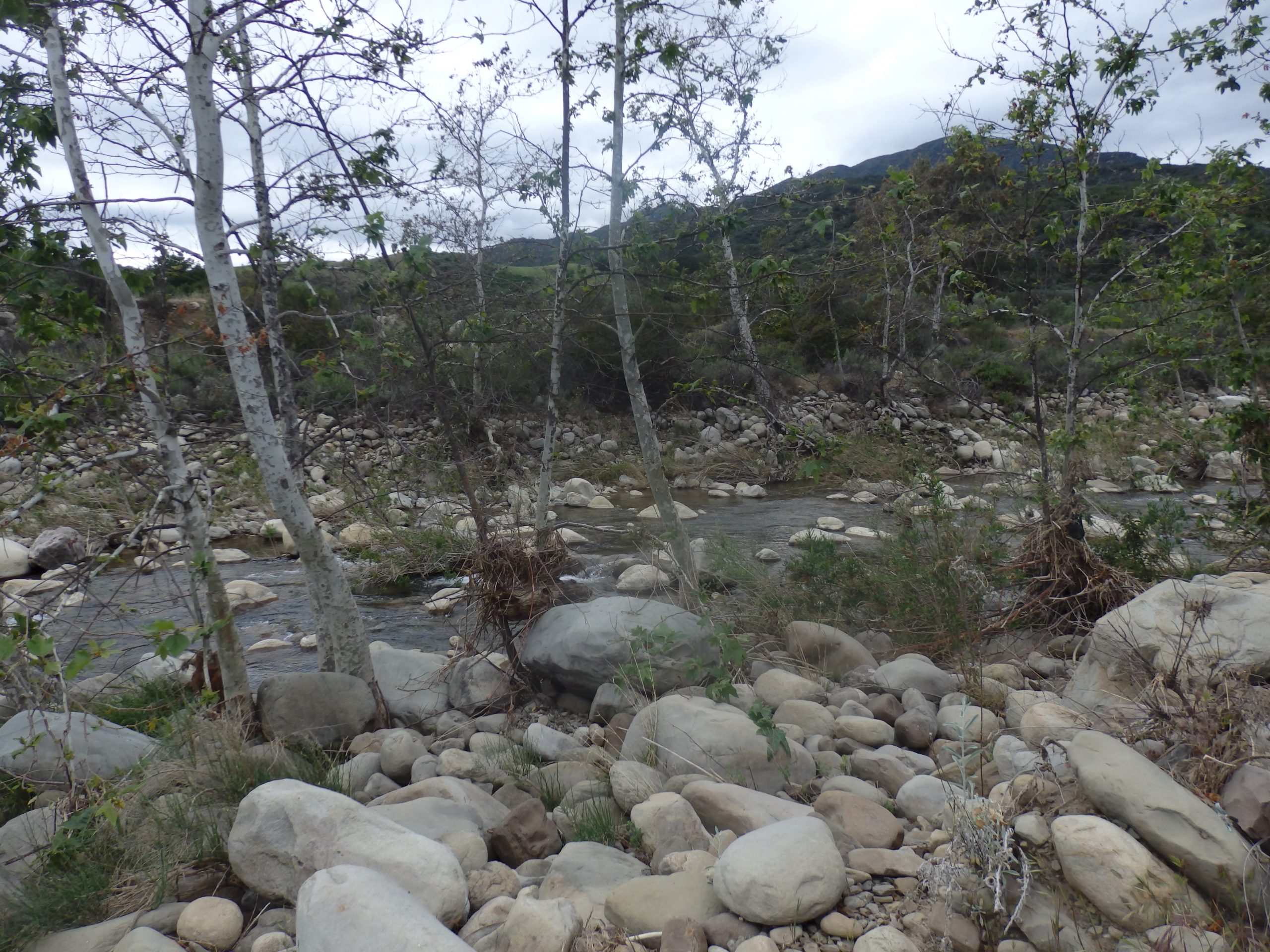
As early as April, the troughs are often empty and dry out during the summer.
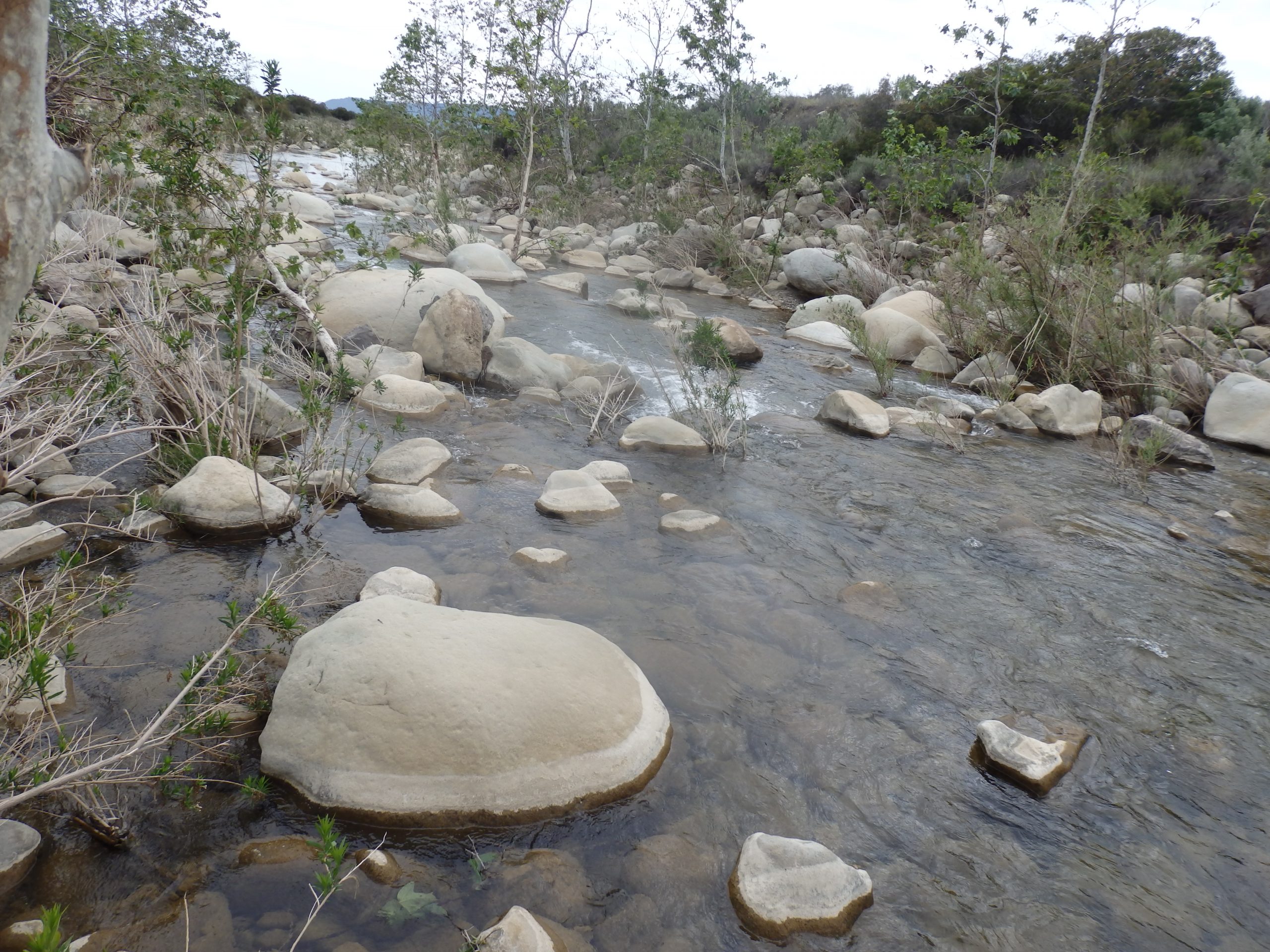

The kinetic energy of floodwaters in the Ventura River presents great risks for beach erosion. Water in the troughs rapidly run off until the riverbed is dry again.
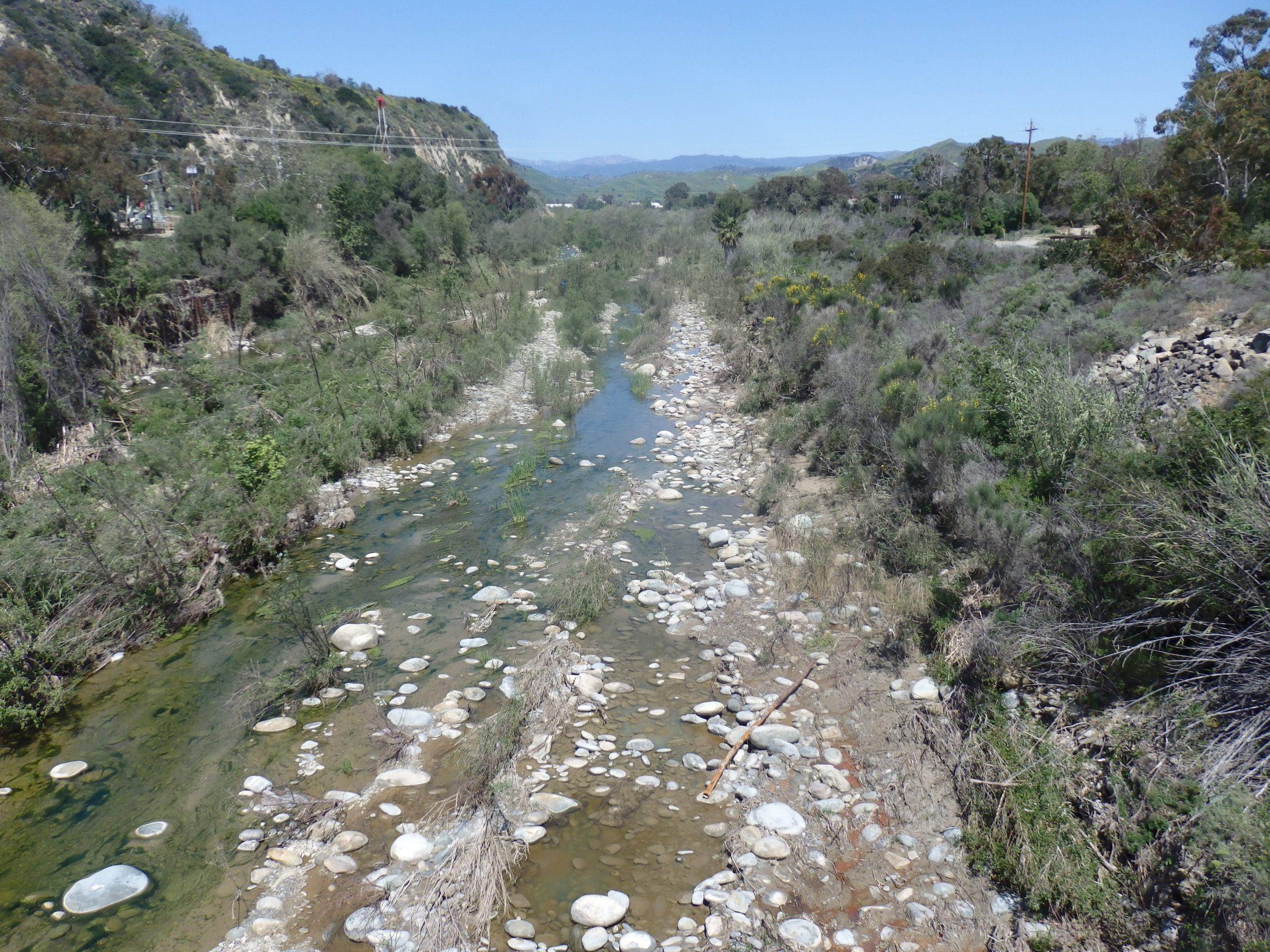
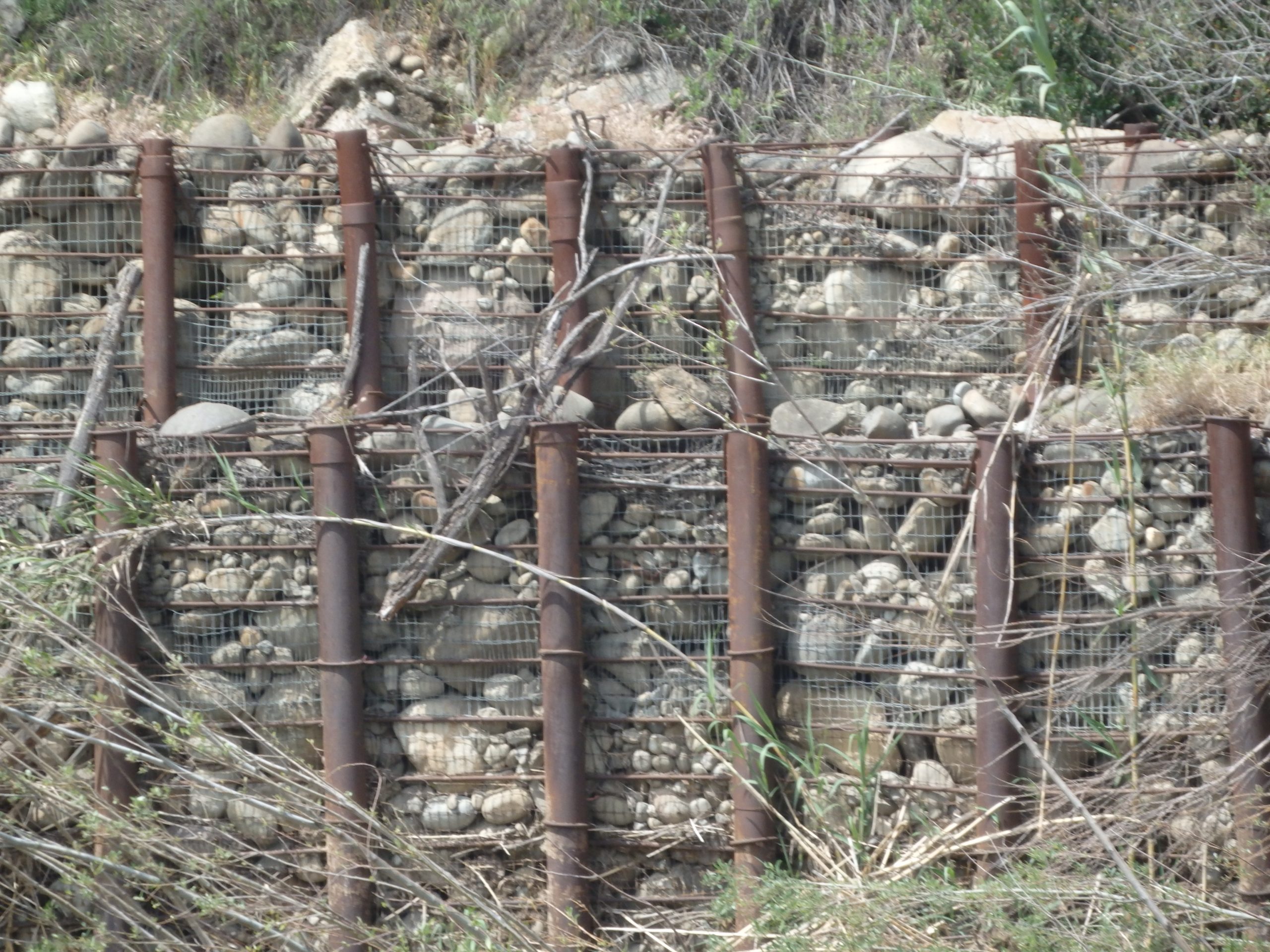
- Water Resources
The acquisition of water resources in the basin is historically oriented to mountain areas. For example, in 1929, a water source was created by digging a 300-meter tunnel into a mountain. Water seeps through layers of rock and is collected and transported for community needs.

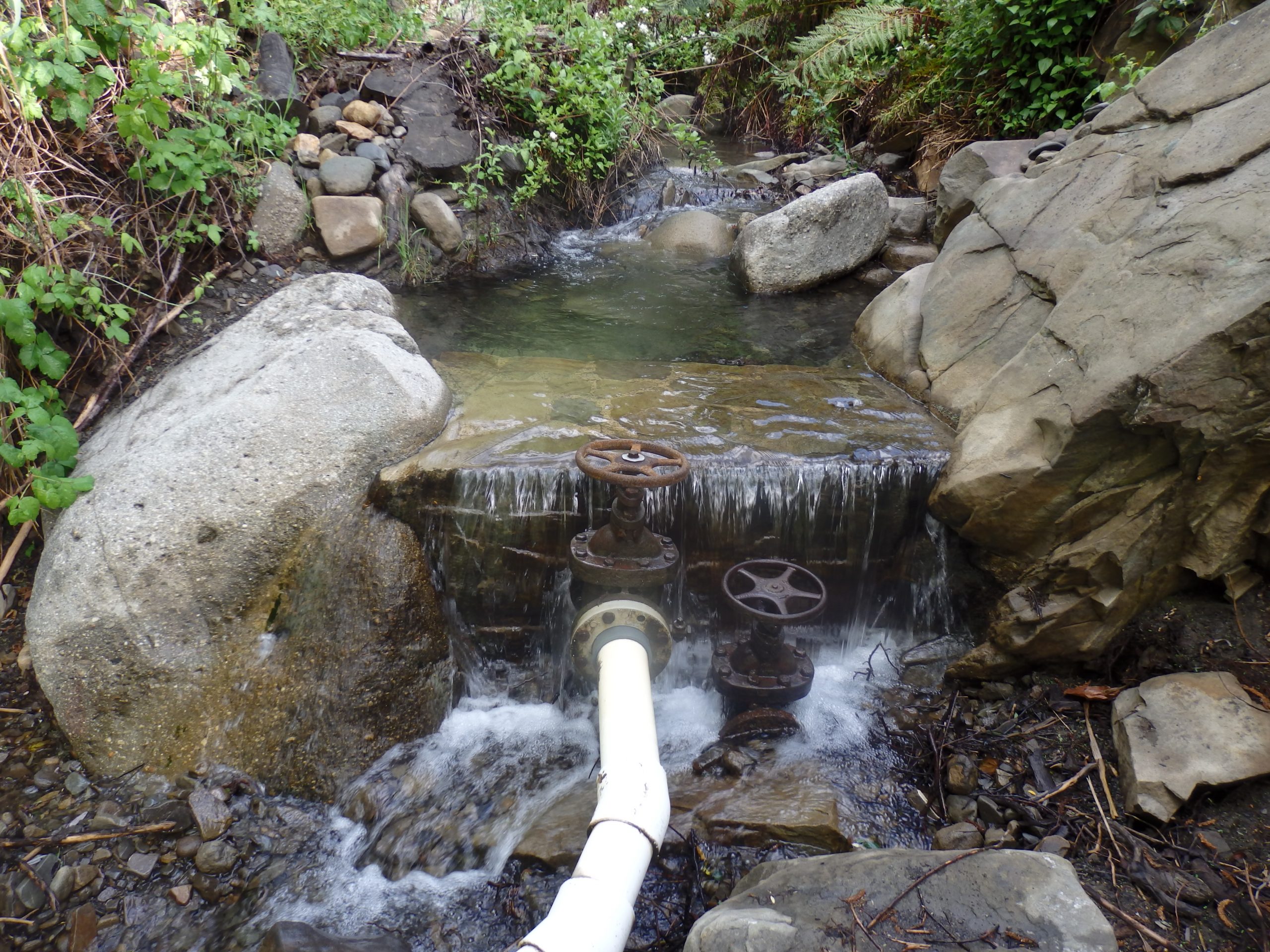
Also, infrastructure was created to drain water from creeks into piping systems and then be piped into the valley for community needs.
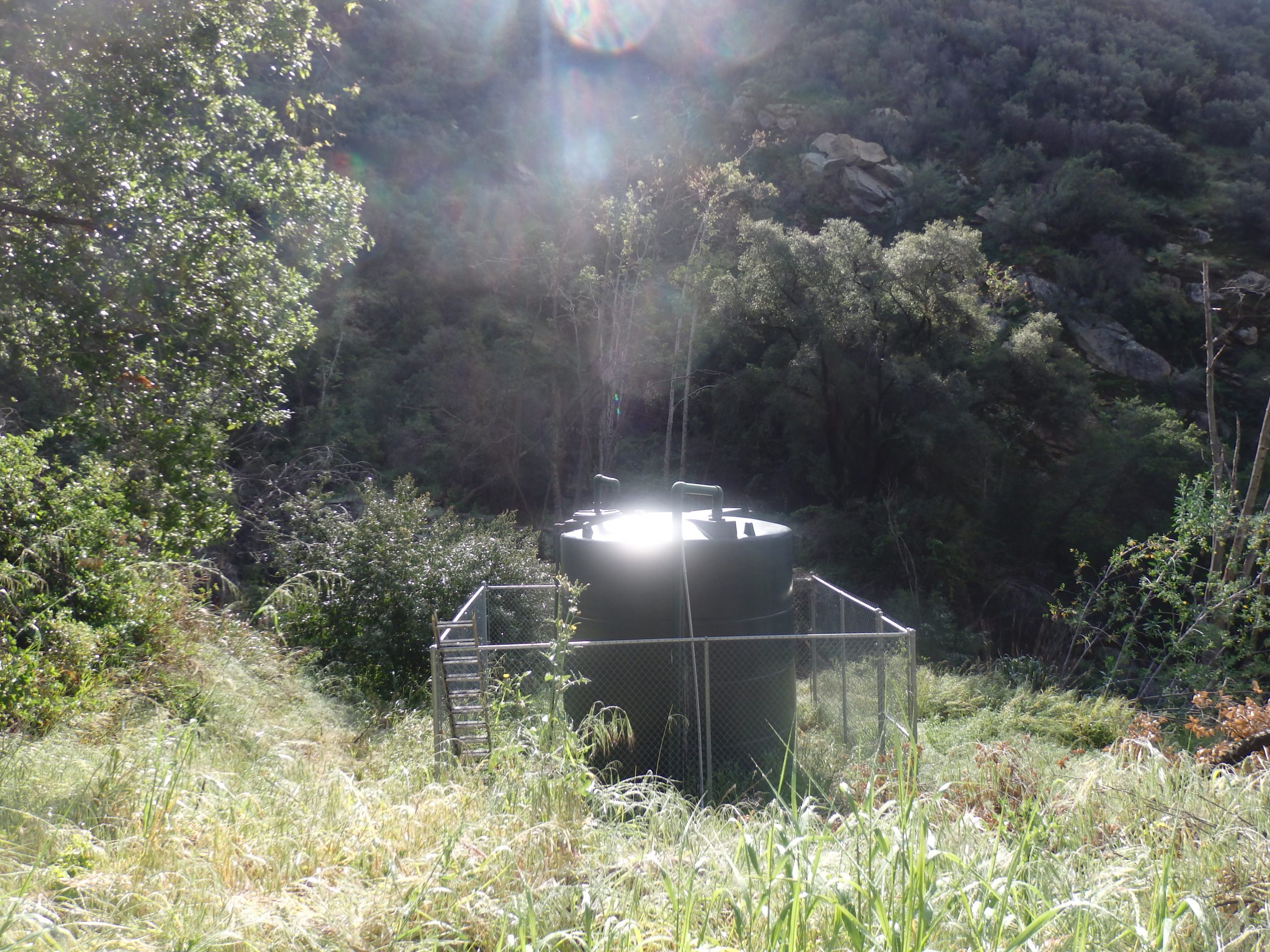
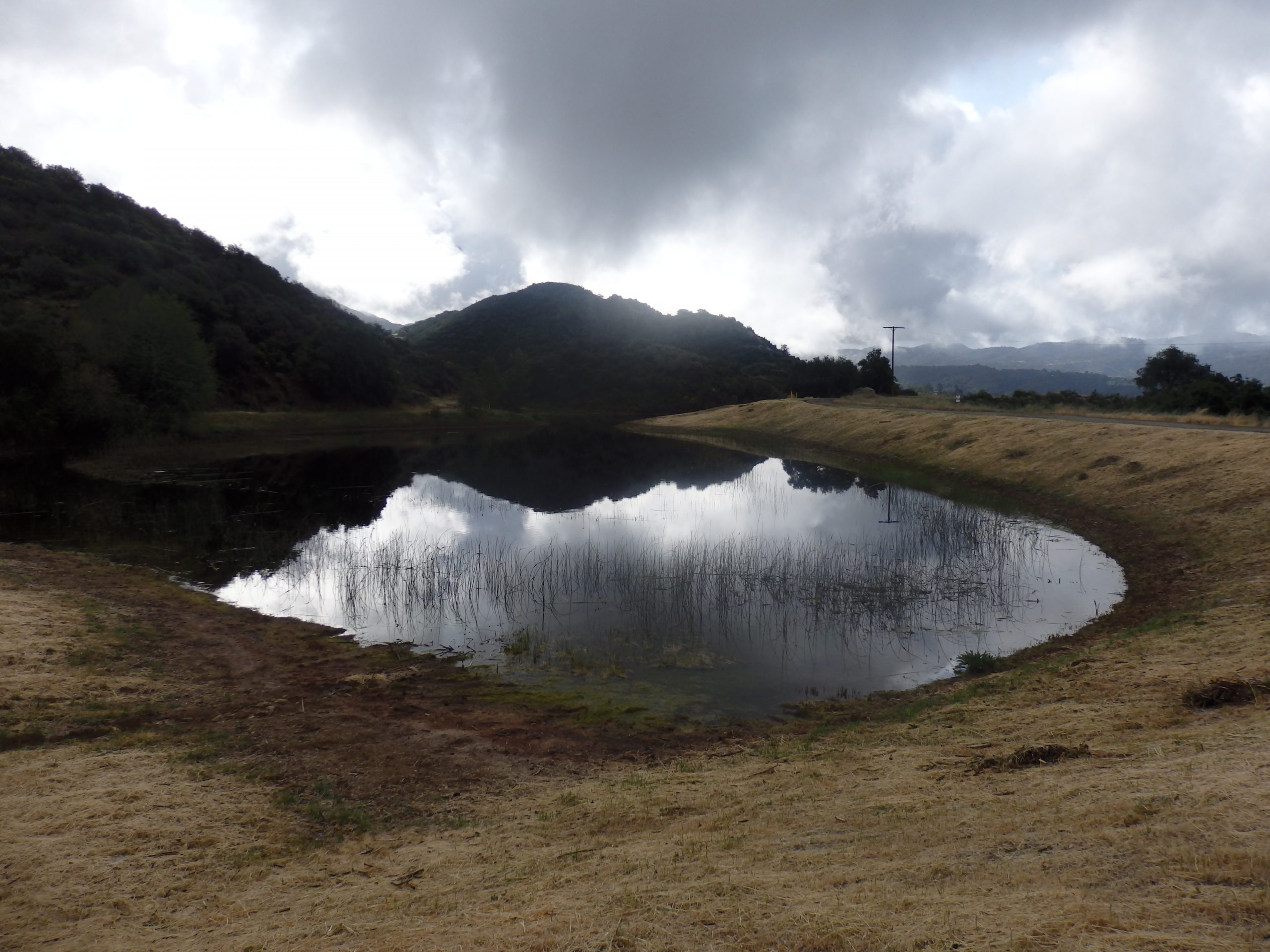
Small water tanks were built for irrigation needs.


There were also dams built in the area.
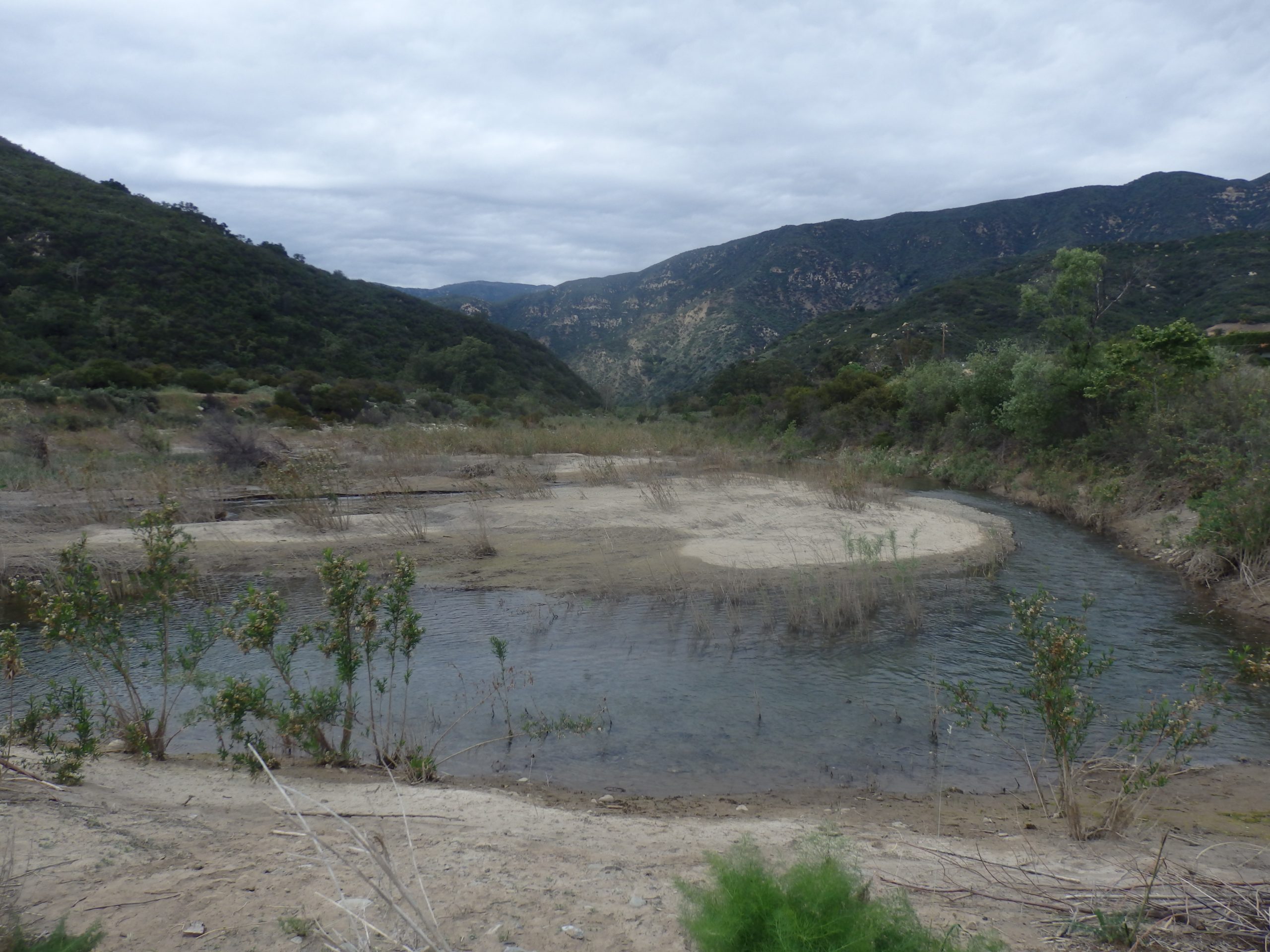


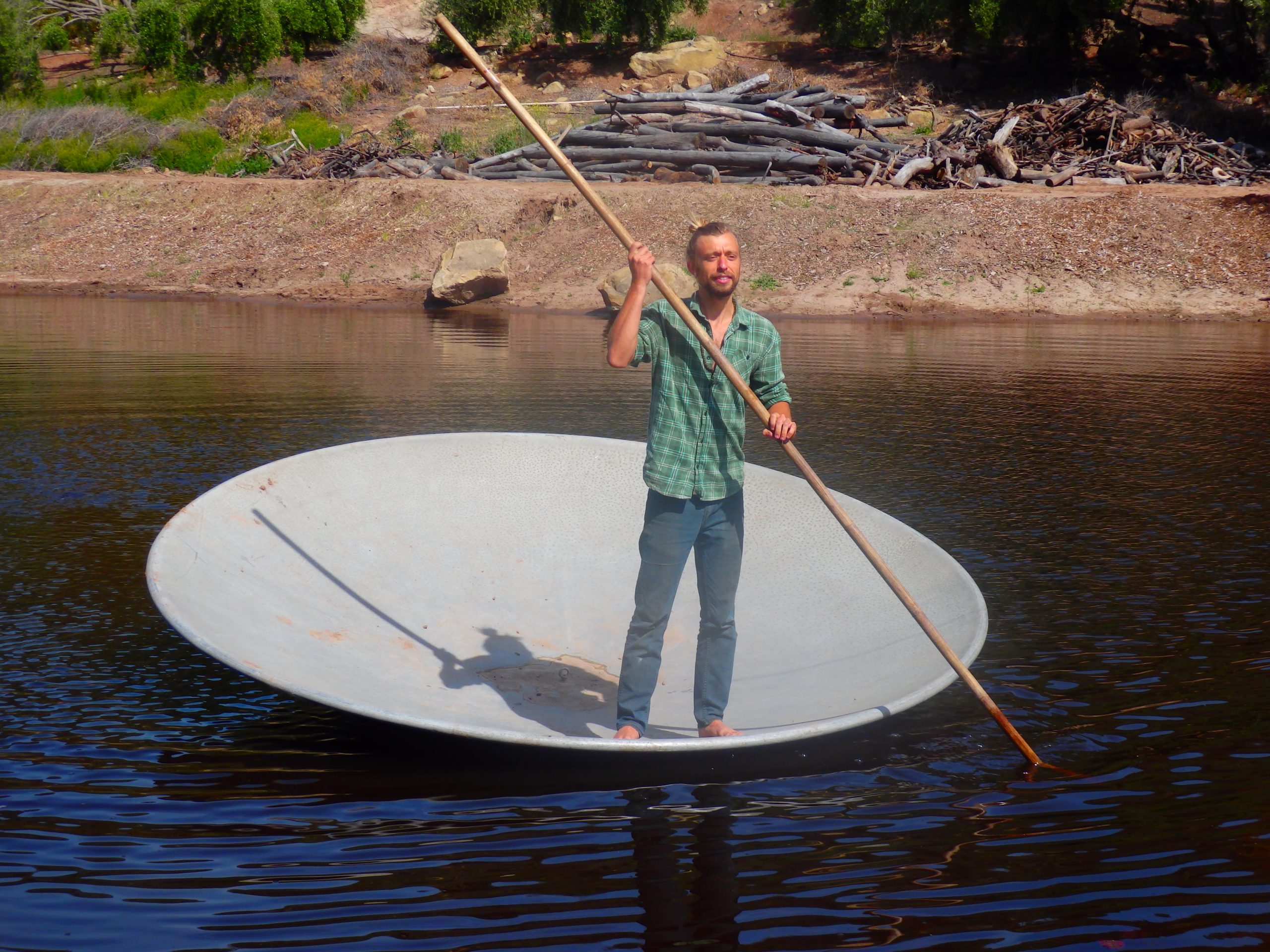
Lack of water forced small farmers to develop small water reservoirs, from which water is used for irrigating crops.

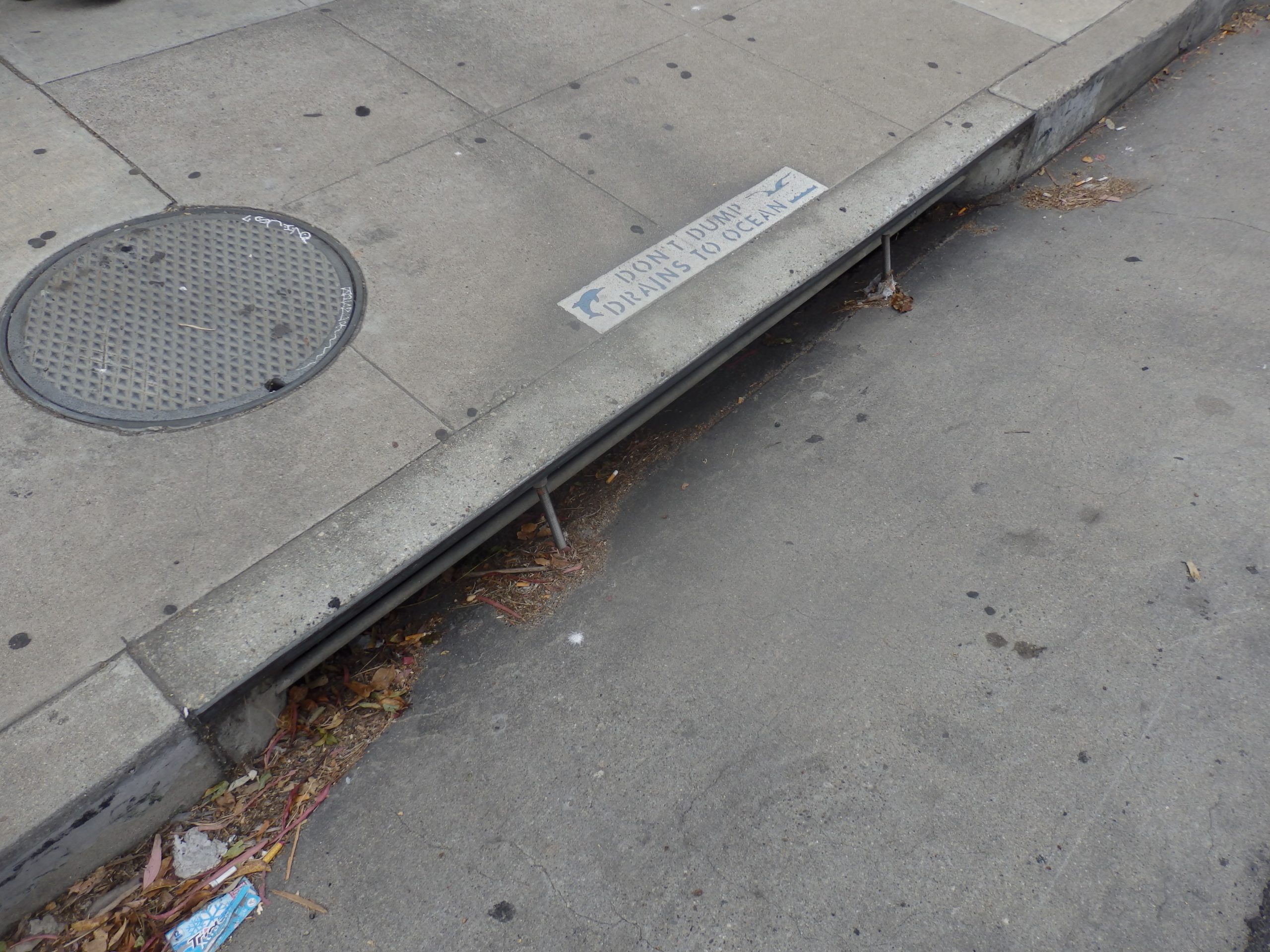
In urban zones, water management is focused on channeling rainwater into drainage collectors and then to the nearest stream.
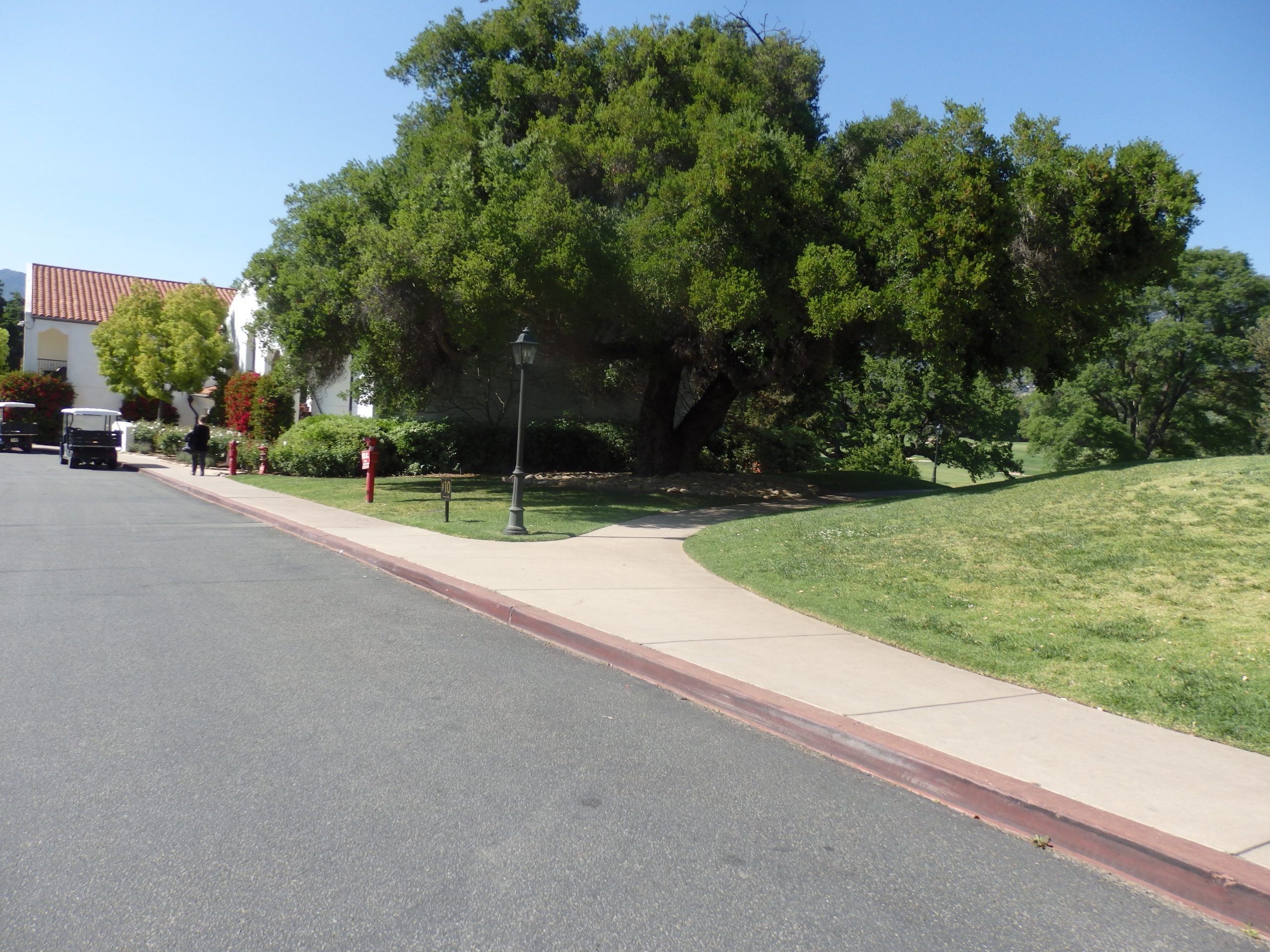
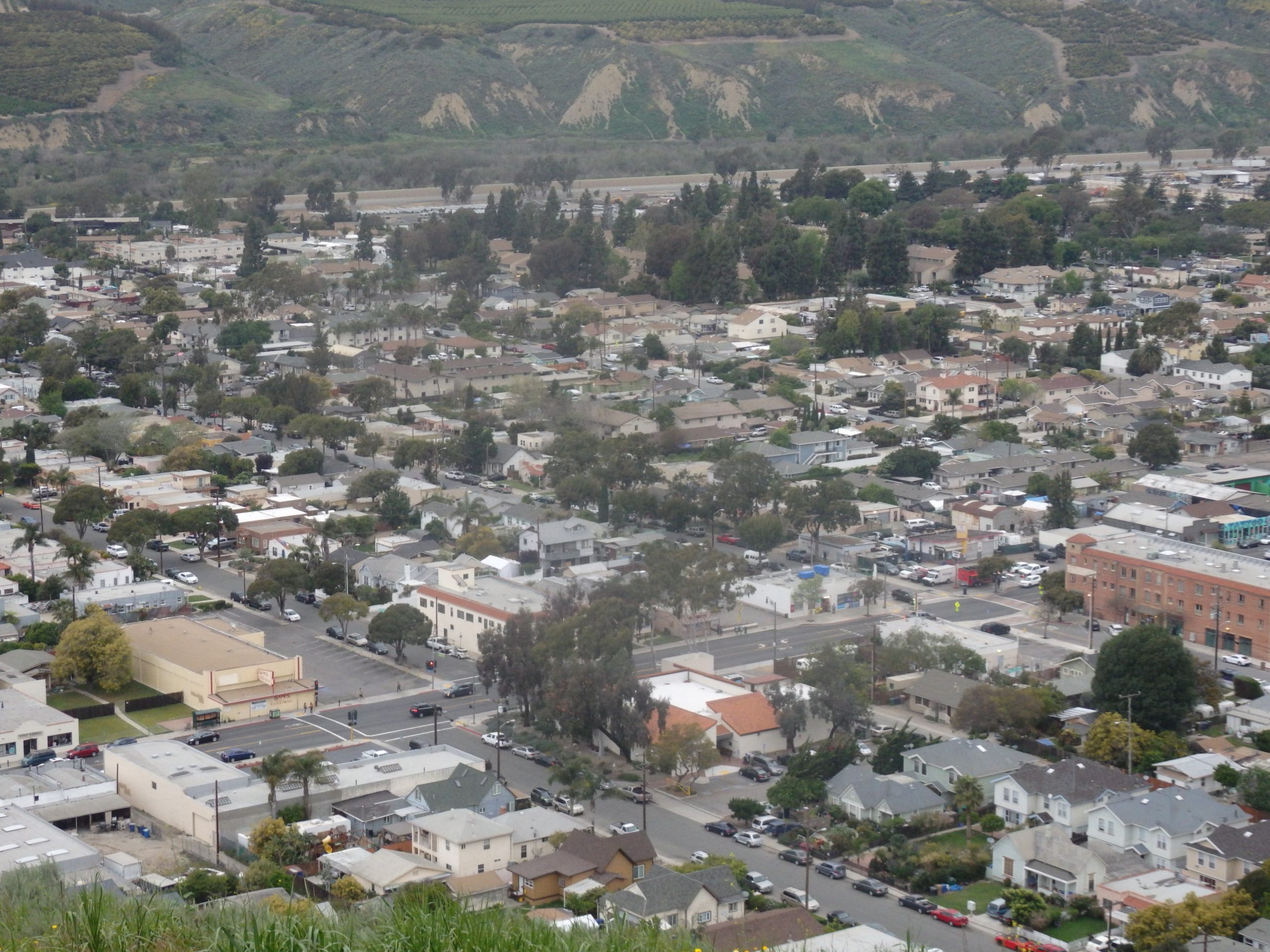
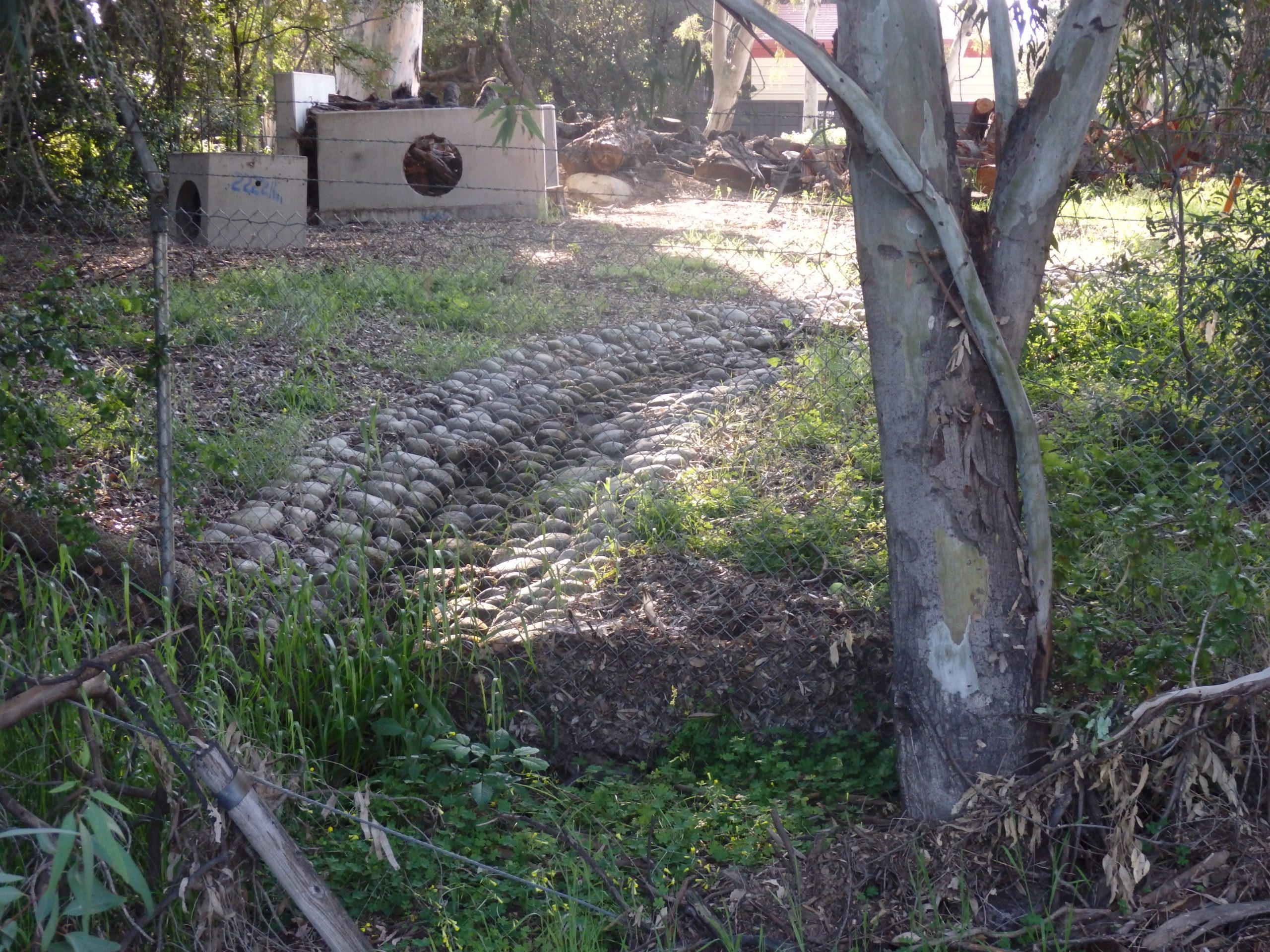
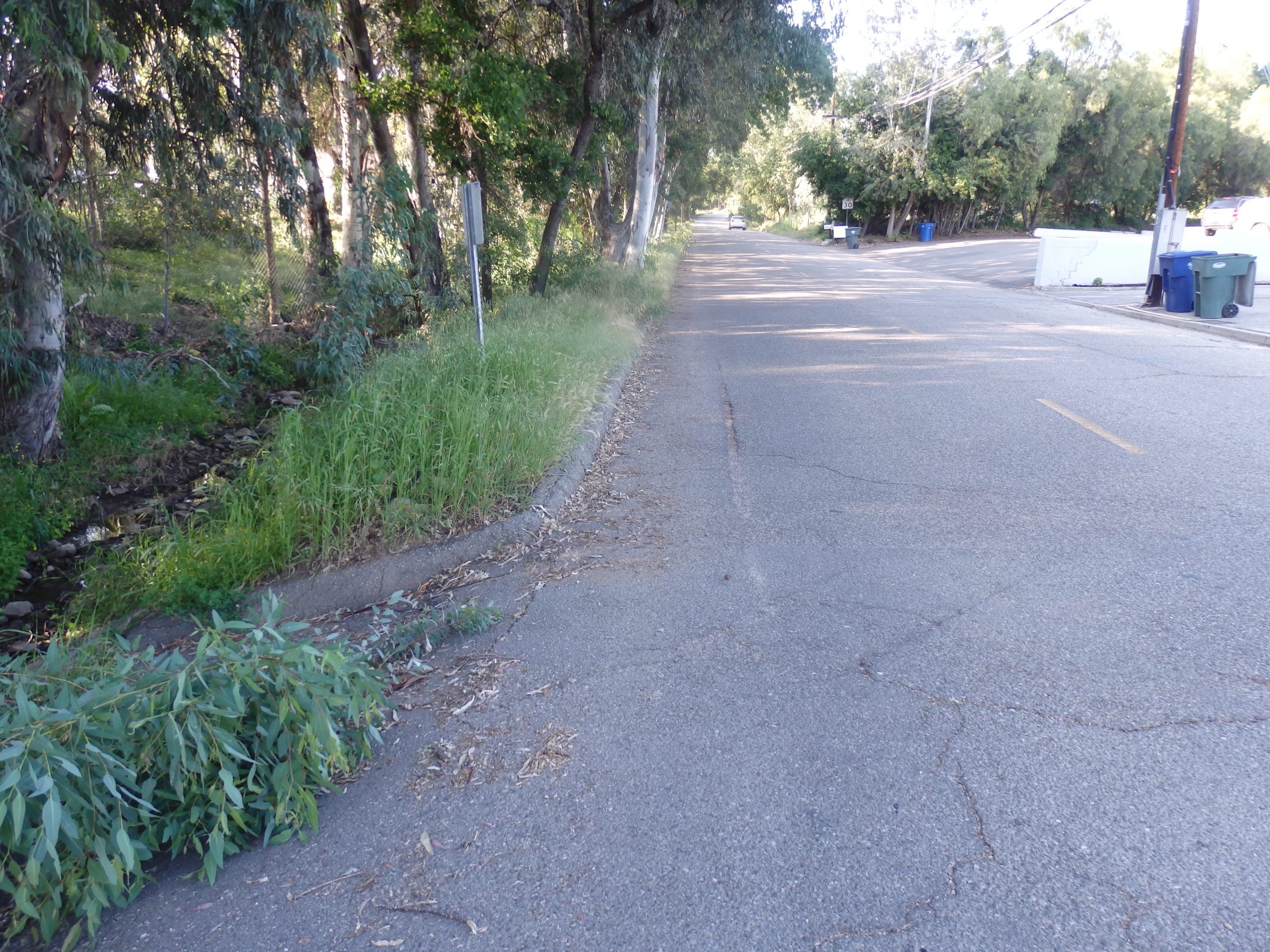
Extensive impermeable surfaces such as roads, parking lots and roofed surfaces increase the risk of flooding in downstream locations.

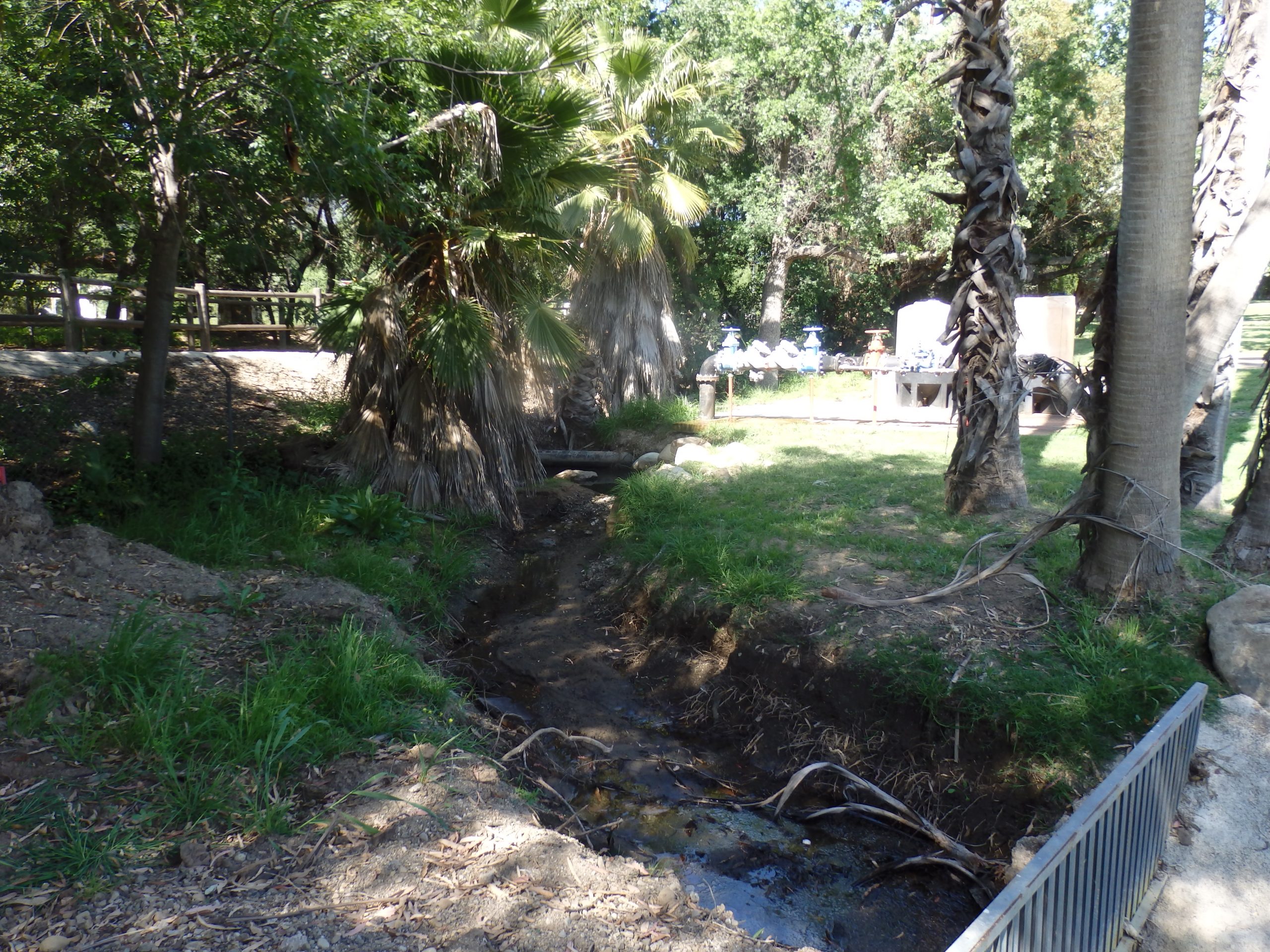
Non-systematic, fragmented and often provisional solutions to the management of water increase the risk of flooding.
- Golf Course
The sources of flash floods on a golf course can be found in the rainwater management practices of urbanized areas in and around the golf course.
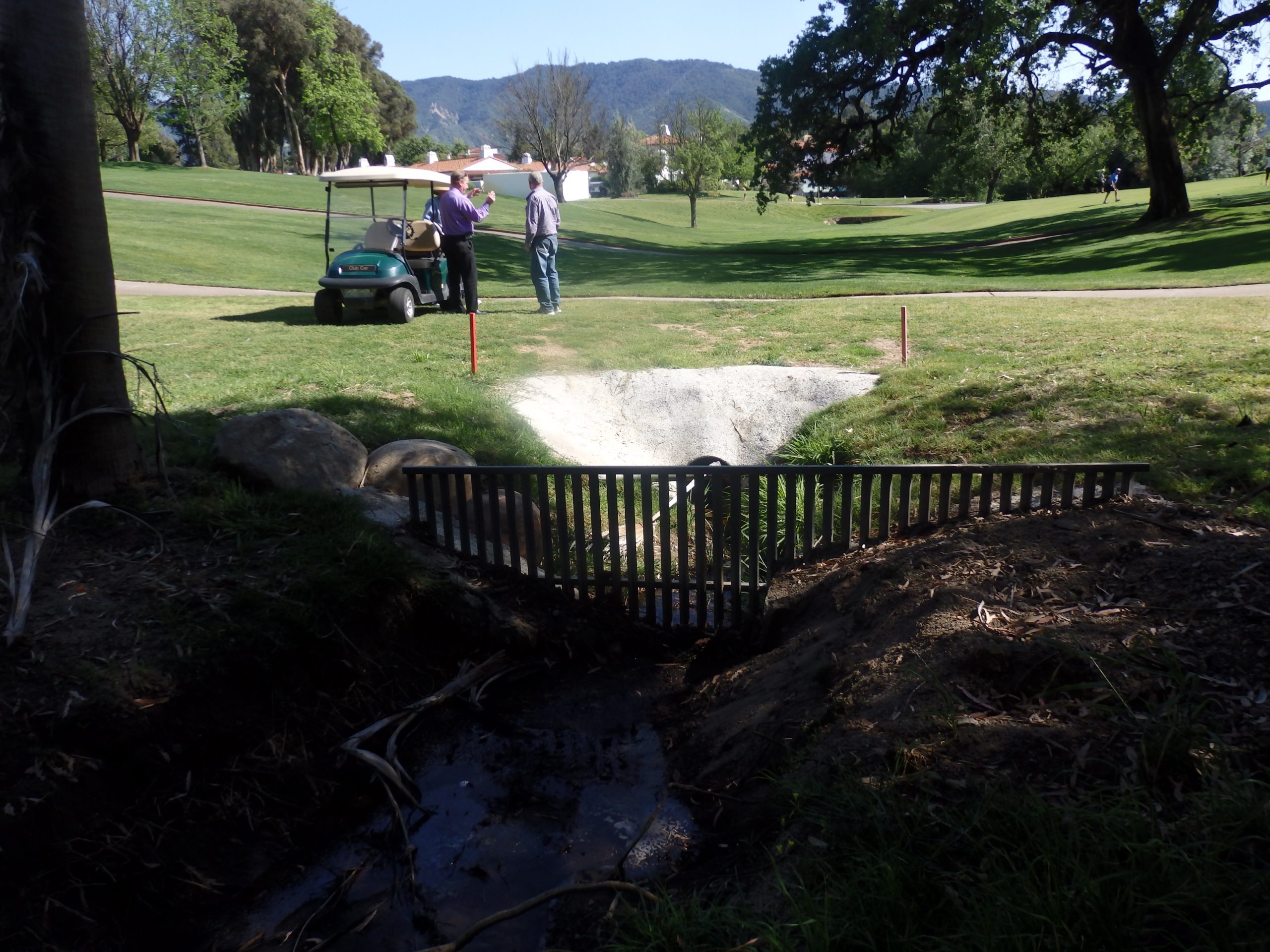

Management of rainwater within the grounds of this golf course is oriented towards the fastest runoff of rainwater during precipitation.


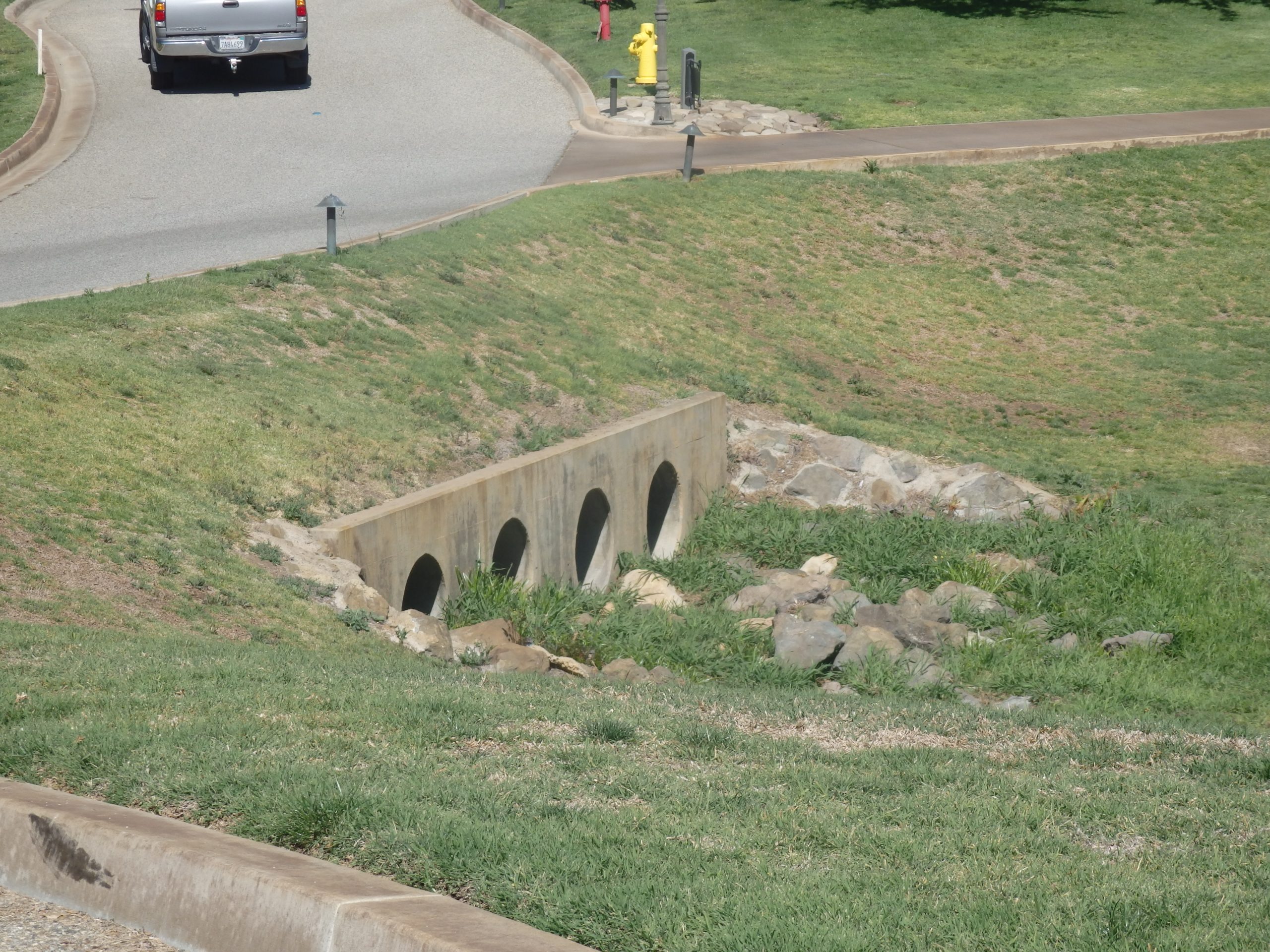
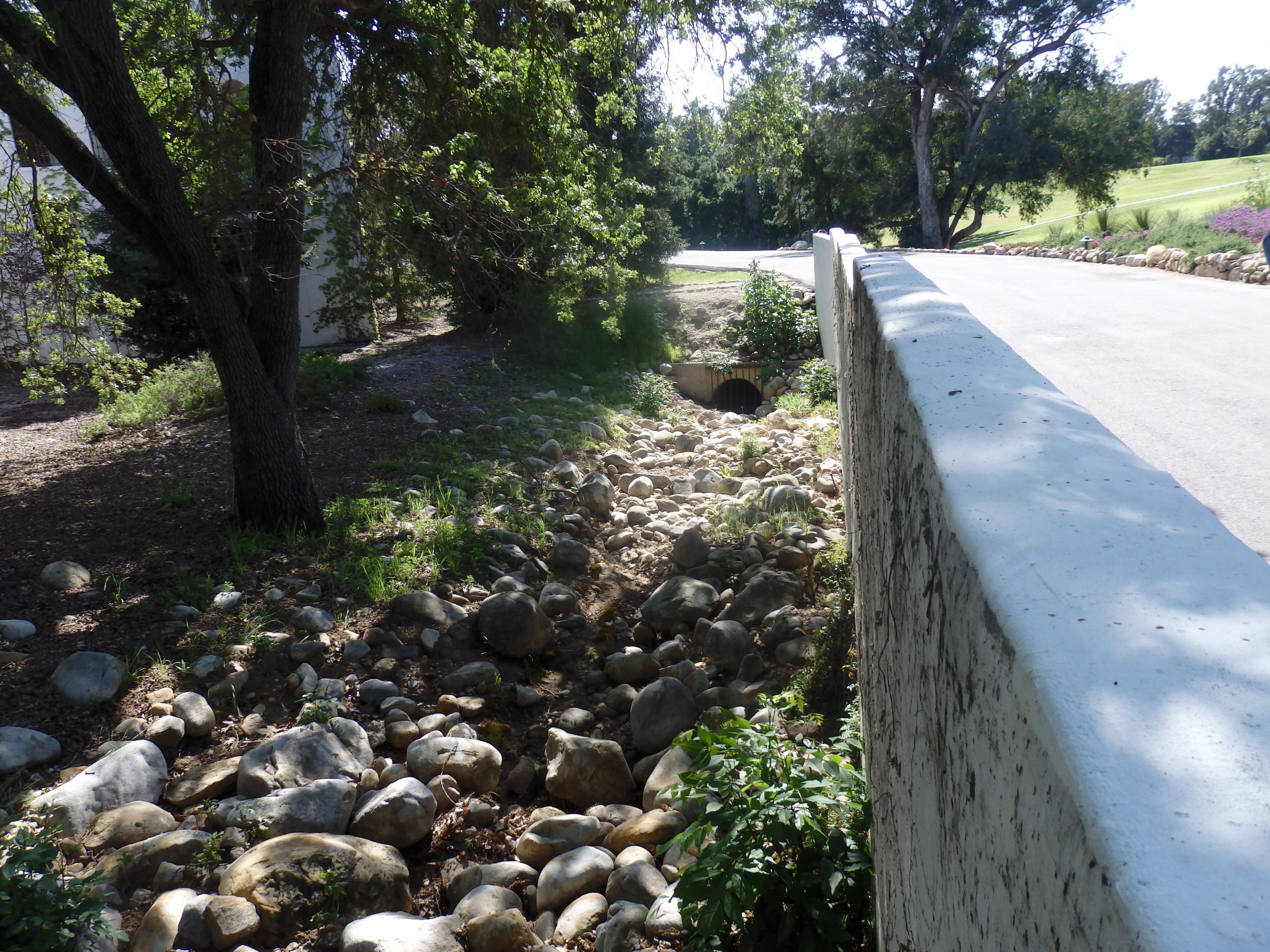
Water management in the area is strongly characterized by the various combinations of shapes, types and sizes of pipes as seen below the overpass.
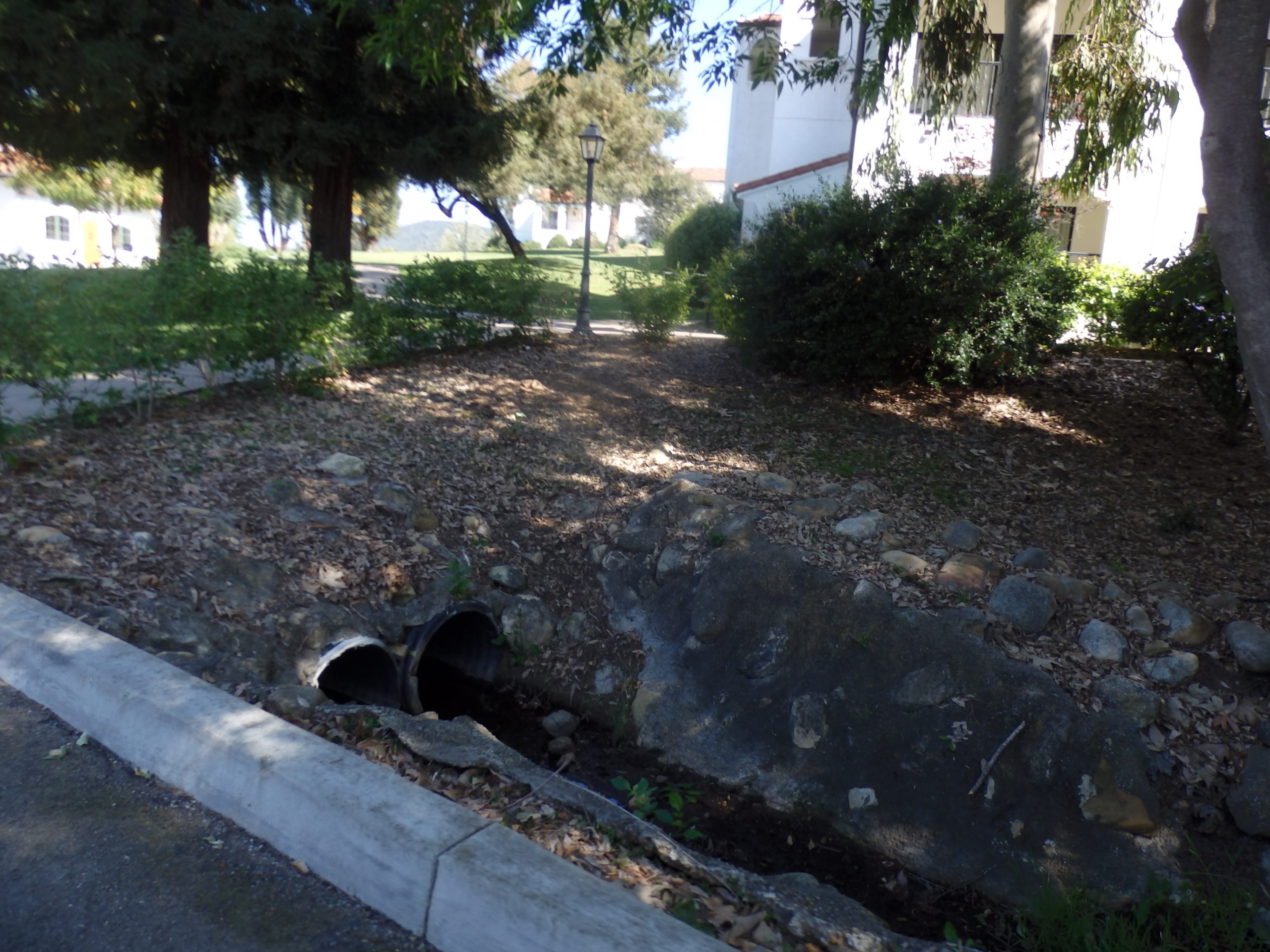
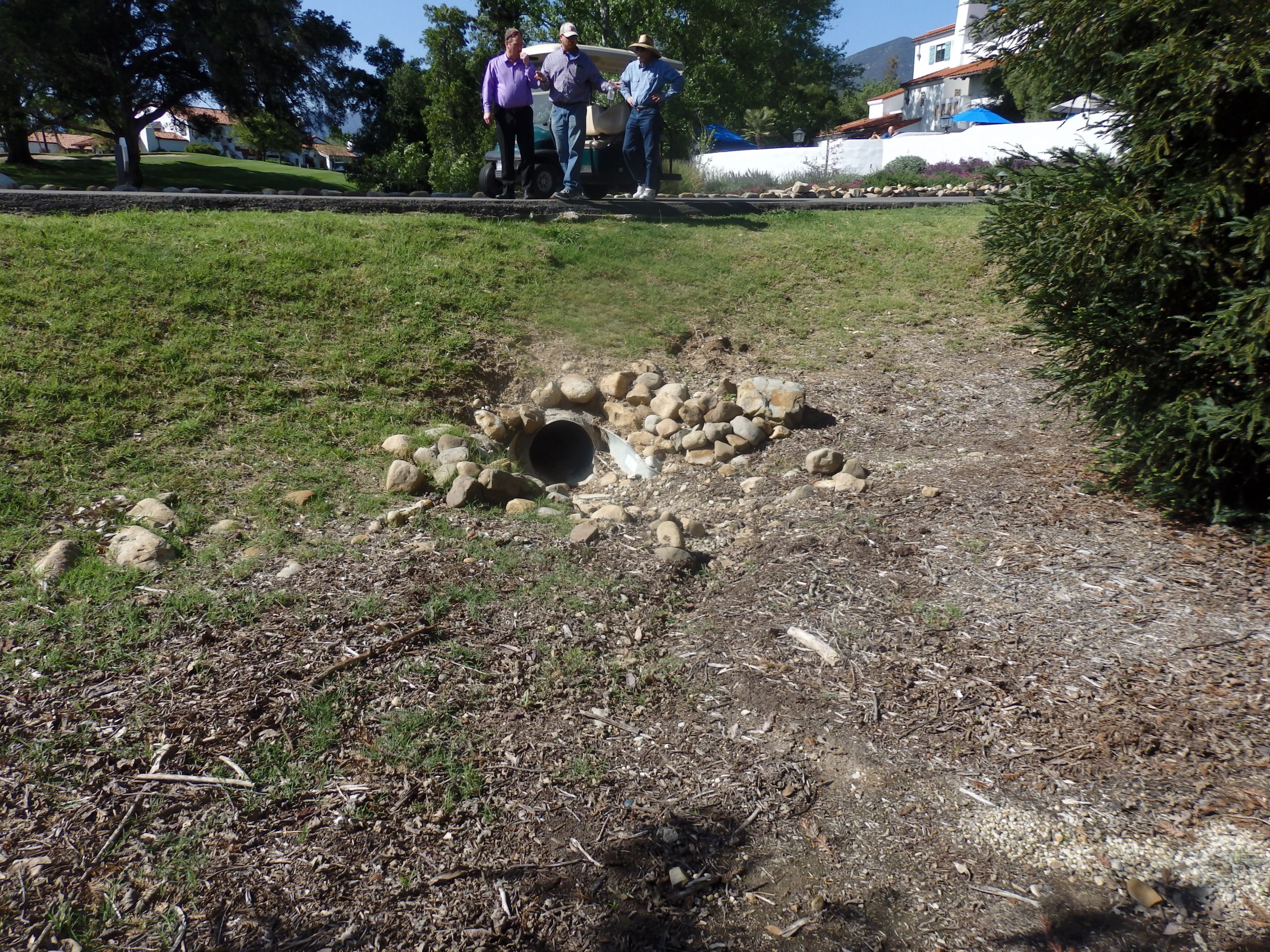
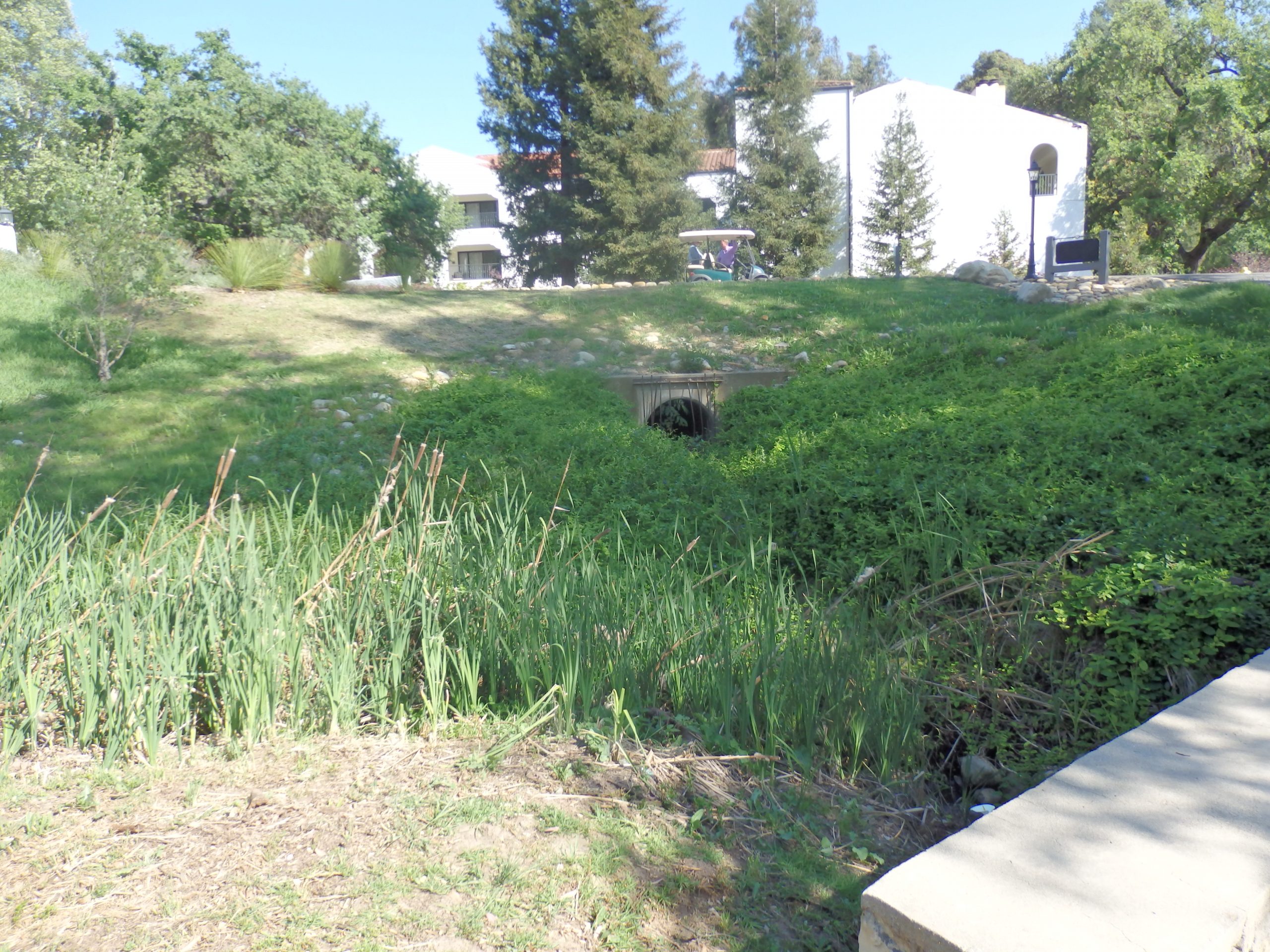
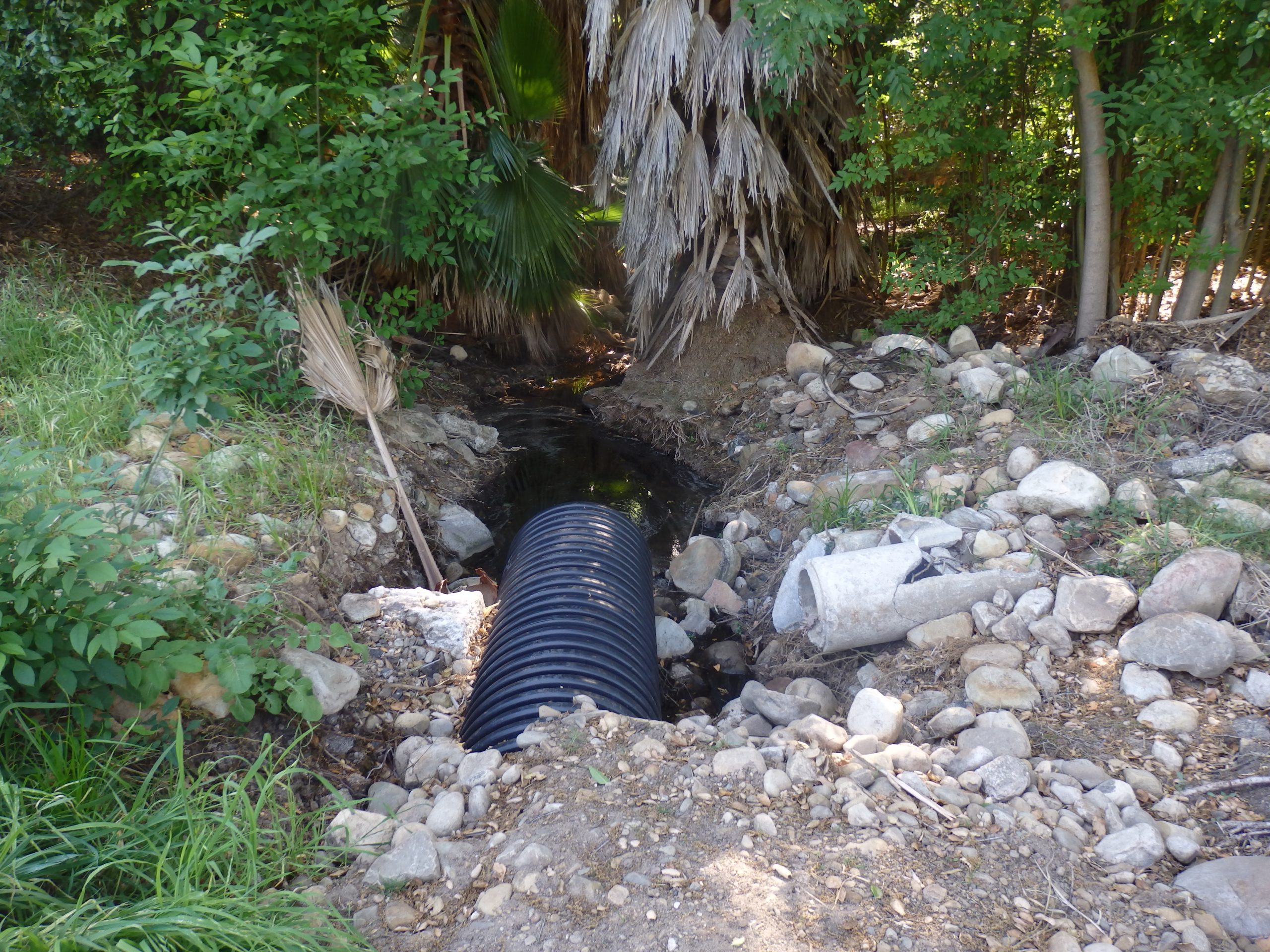
- Rainwater Management in Suburban Zones
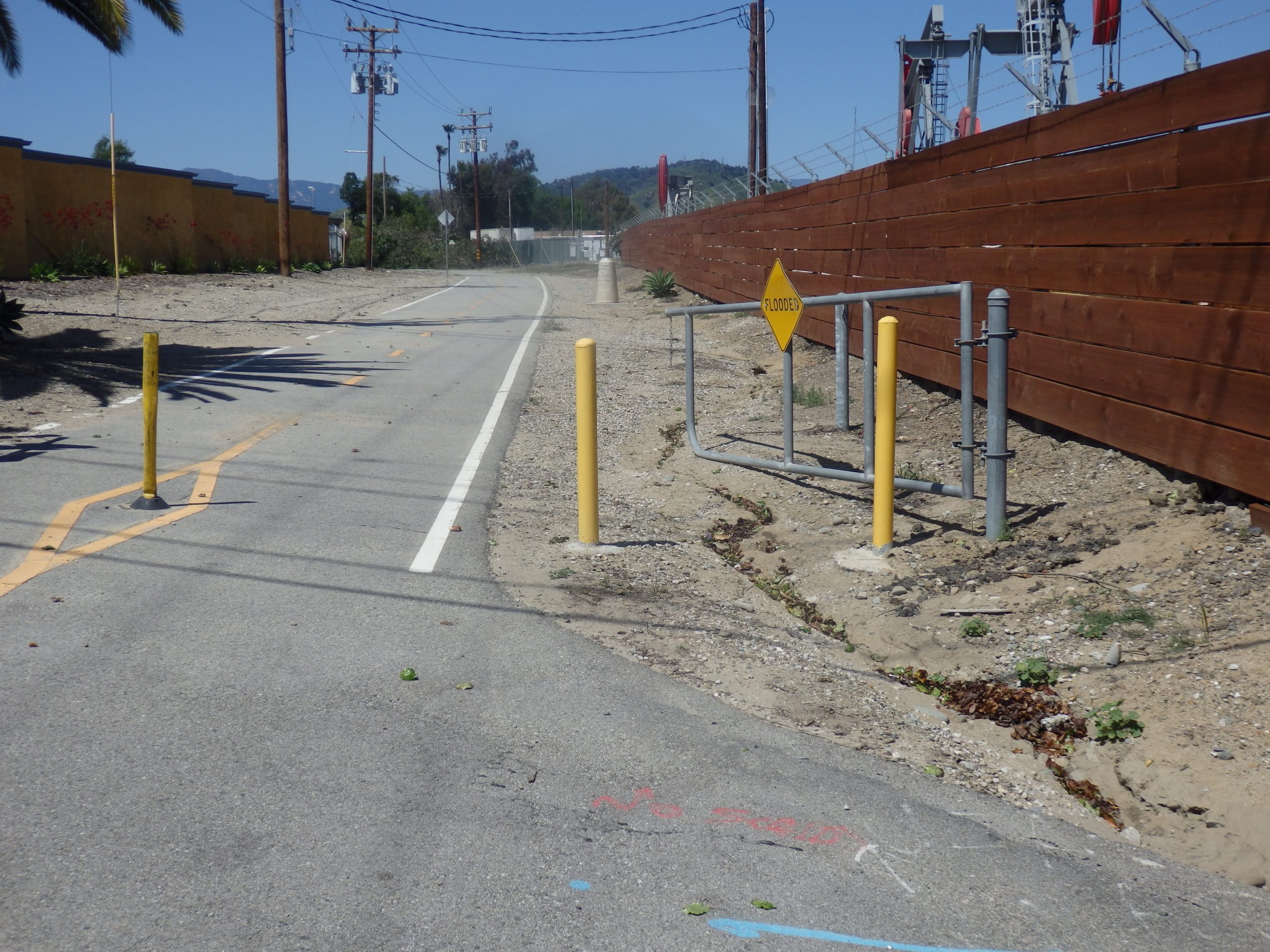
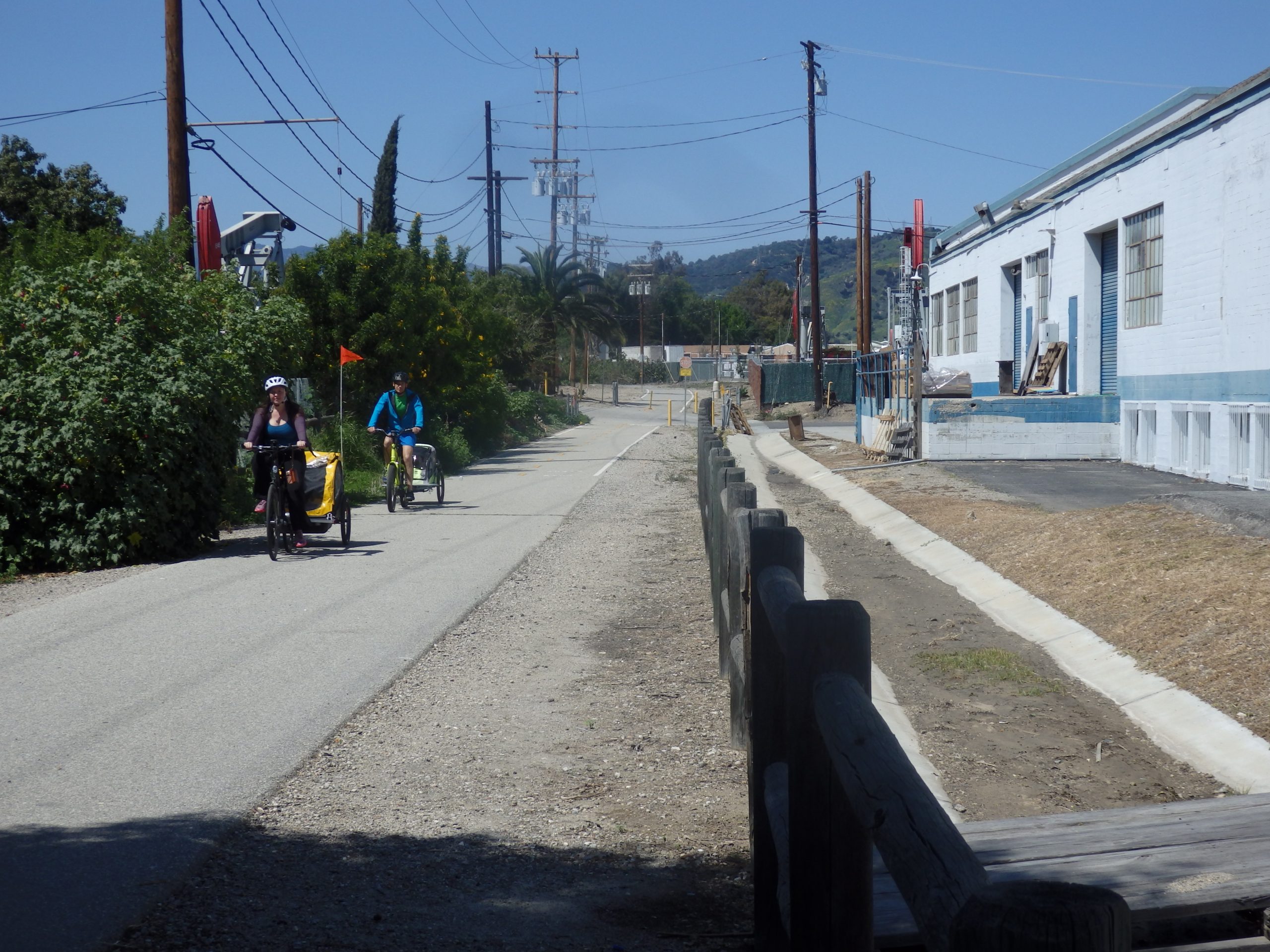
The Old Water Paradigm prevails in the area – rainwater is collected and transported to the ocean.
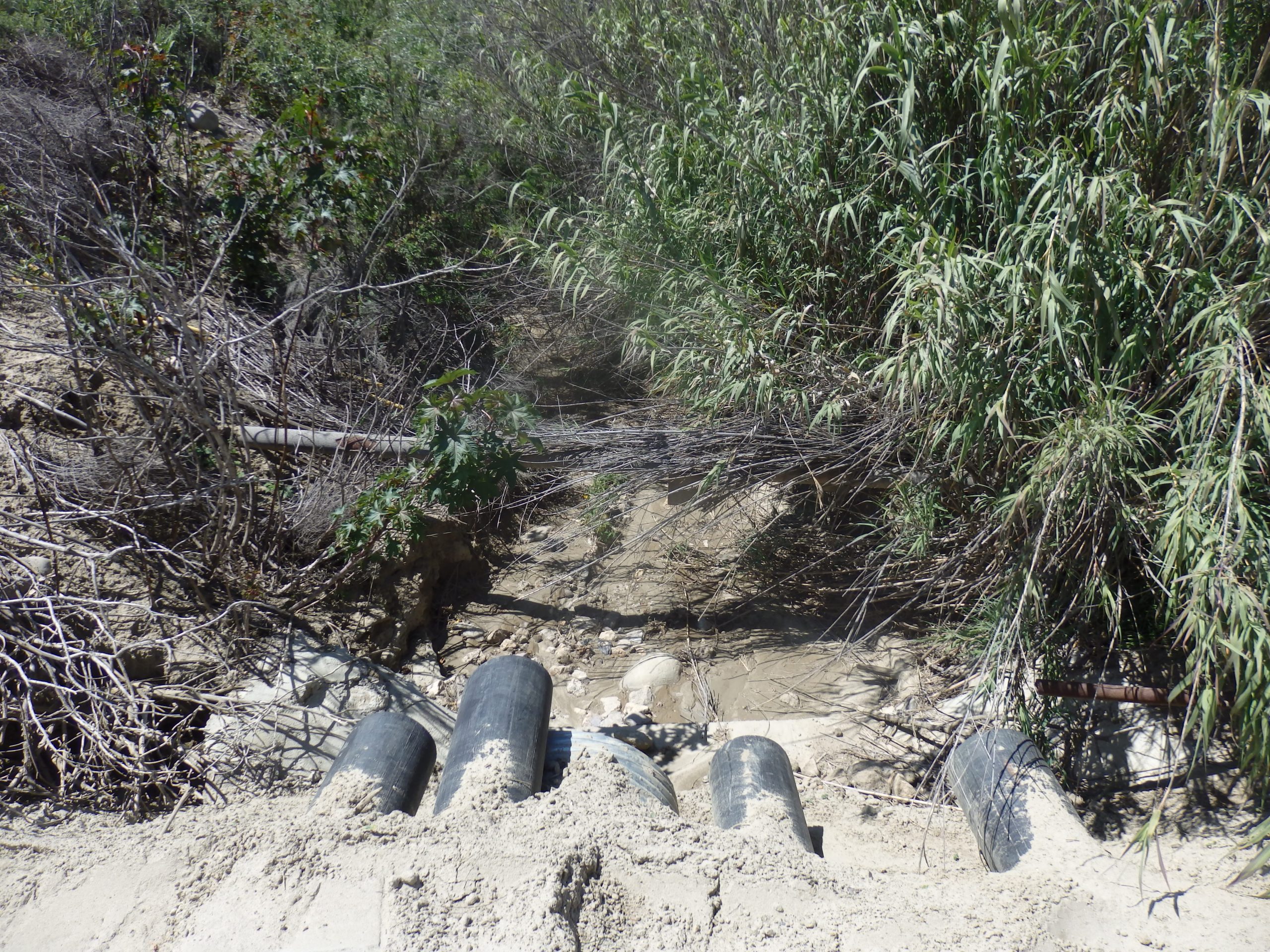

In the area, numerous provisional solutions exist, whose purpose is to sluice off rainwater and transport it into the nearest stream.

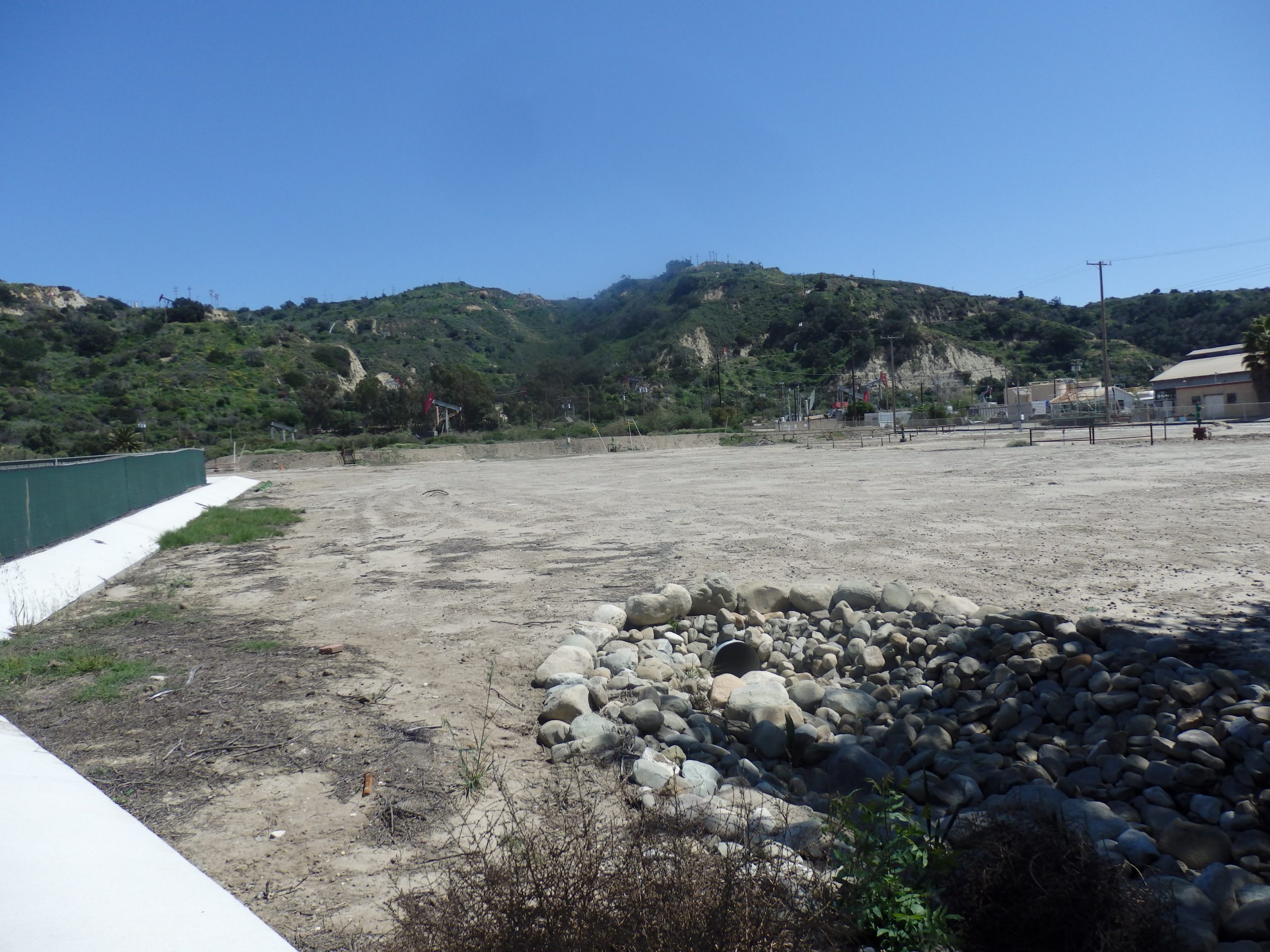
If a natural water drainage system doesn’t exist, an artificial one is created.
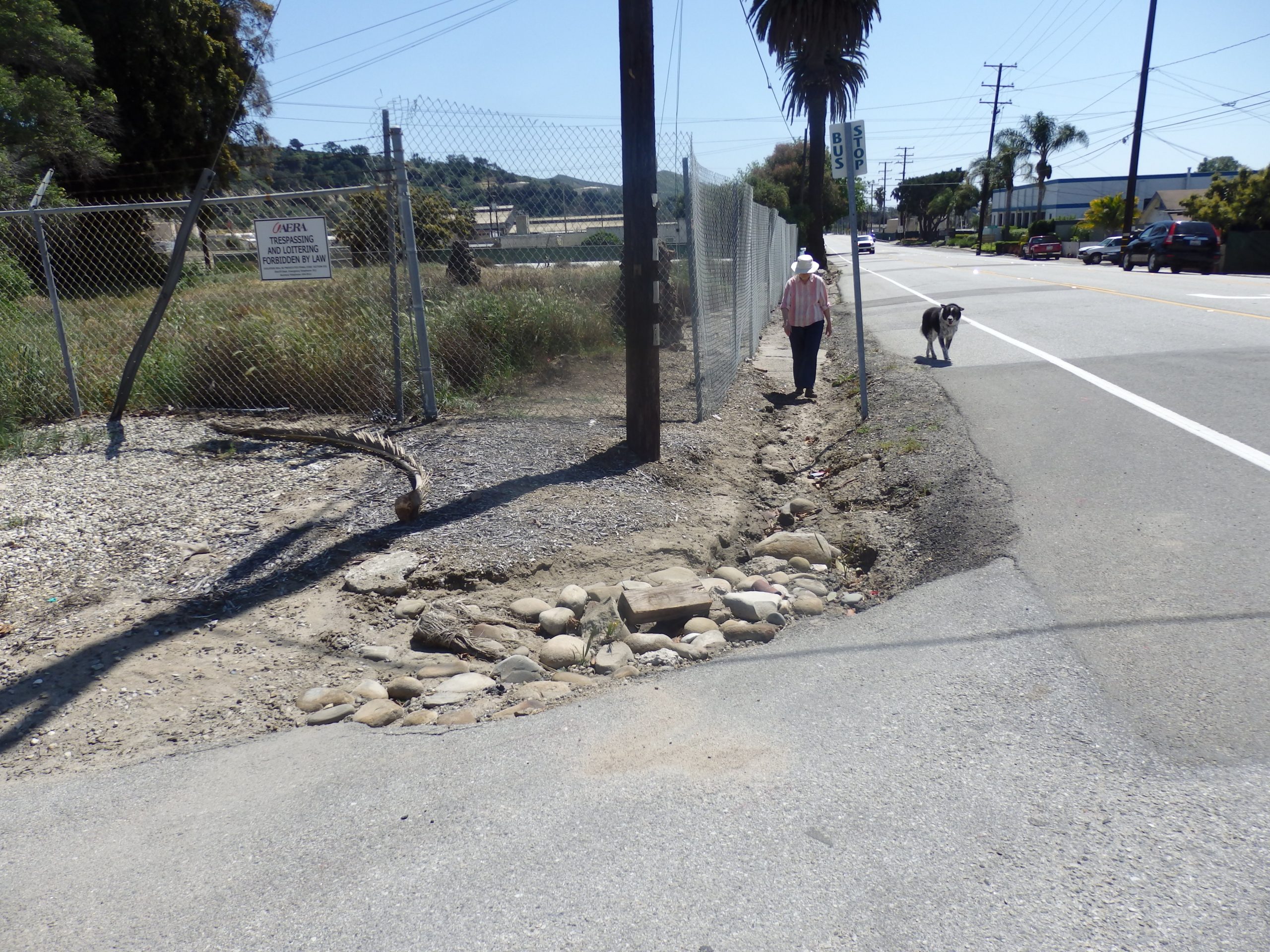
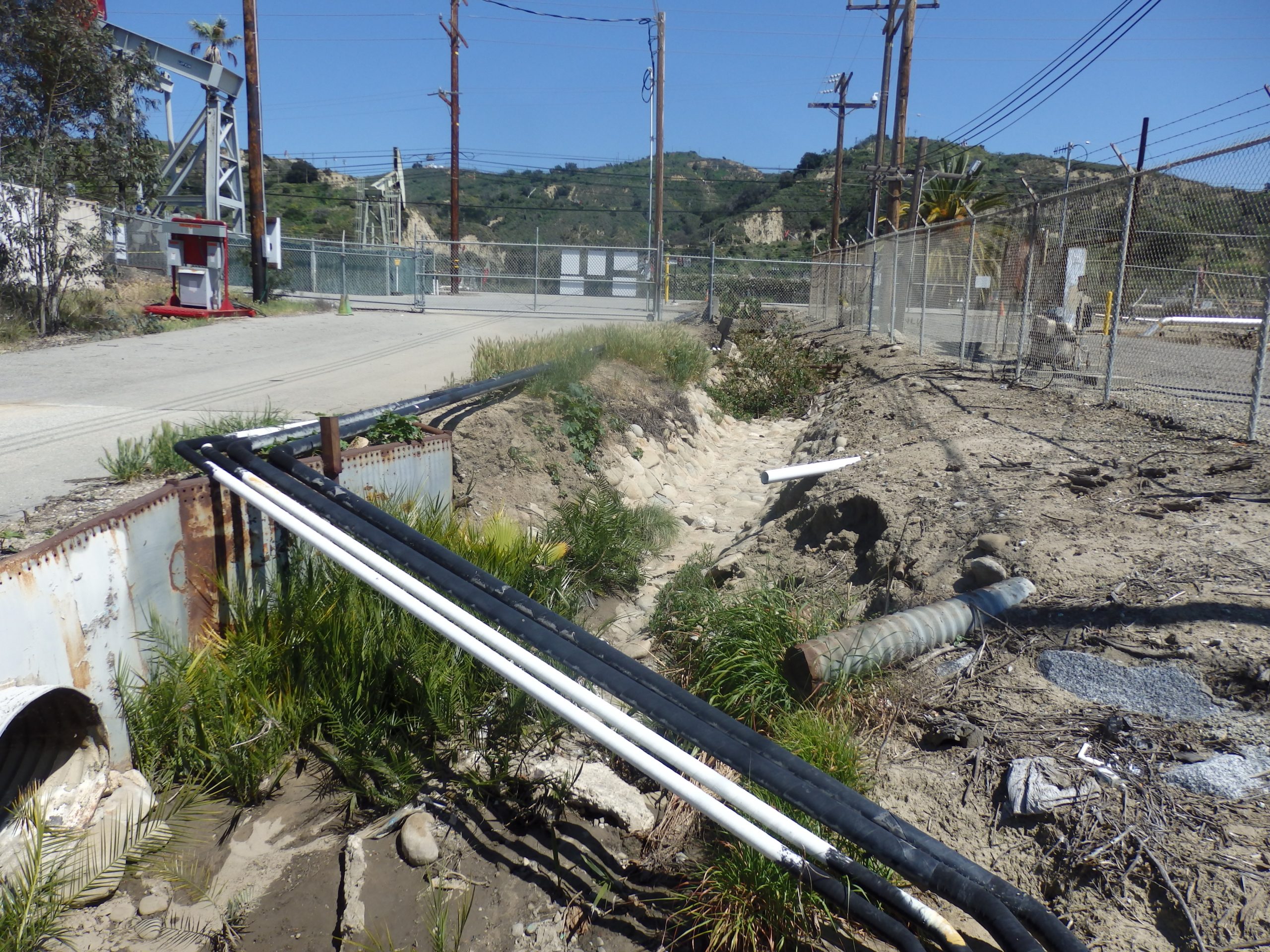
The entire area is drying out and consequently overheating.
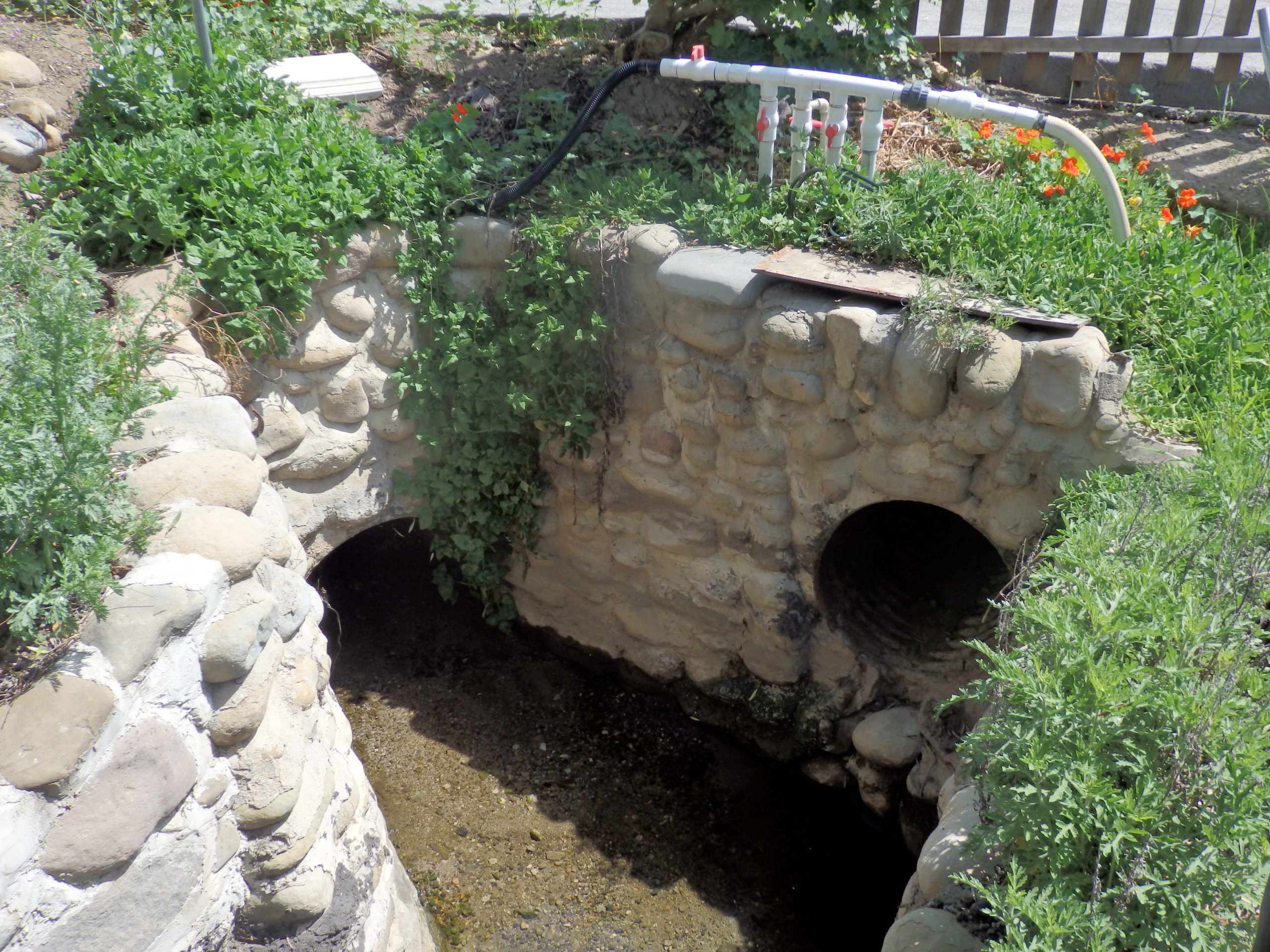

There are many areas of the Ventura River Watershed, which, during times of intense precipitation increase flood risks, while during times of drought, the water basin suffers due to lack of water in the ecosystem, low water levels and frequent drying up of water flows. As a result, biodiversity suffers, especially fish. Additionally, a large number of bridges, especially bridges above human-built water diversion systems brings about the risk of overflow of water causing local floods and subsequent damage to property. In the past, these bridges were built to meet the requirement of the then present hydrological circumstances, a time when the occurrence of intense rainfall and the equally rapid concentration of outflow of rainwater from damaged areas of the basin were still unknown.
Changes to water use in the area carries with it great risk for the future. Ecosystem changes in the water basin and especially urbanization results in four substantial changes:
- Rainfall causes intense runoff of rainwater from the water basin, which results in flood waves, which form new current flow processes in the entire river infrastructure of the Ventura River network. During flooding this not only carries away gravel and sediments but also trees which have fallen into the river.
- Trees carried off by the flood wave along with other biomass (branches, grass, etc.) and sediments plug up water flows under bridges and reduce water flow capacity. In such instances, flood waves find an alternate route and spill out of the water diversion system into communities and cause extensive damage. Such a formation of flood waves with the chaotic falling of trees into rivers and being carried off along with other biomass is an inevitable and uncontrollable part of flooding. The kinetic energy of flood waves subsequently transports, sorts and stores biomass, suspended solids and sediments based on the flow profile of the river, and it is here that bridges augment the risk.
- Land use practices and water basin management bring with it temporal and spatial changes to the distribution of precipitation. Temporal changes to the distribution of precipitation augment the risk of flooding and drought. Periods without rain are being extended while the frequency of intense precipitation is concentrating into the winter season. Consequently, in the summer months, this water is missing. The cause of this change is the dehydration of the small water cycles influenced by the damaging of ecosystems and their subsequent degradation. The most dire change to an ecosystem is classic urbanization (roofing, covering of the earth’s surface with asphalt, etc.) accompanied by the excess run-off of rainwater into the nearest water diversion systems and rivers. The growth in intense torrential rains is directly linked to the domination of water within the large water cycle. The return of water into the small water cycles through retention of rainwater reduces the risk of intense flood waves as well as the occurrence of intense torrential rains.
- The area around the Ventura River water basin suffers from water scarcity. Great potential for improvement lies in the retention of rainwater in ecosystems which now runs off without being put to use and contributes to the damages caused. This means that water which causes problems can instead bring about value in various realms (prevention of floods, drought, and climate change, the growth in the natural production potential and biodiversity growth in the area, employment opportunities and overall increased prosperity).
What is the objective:
It is necessary to remove the causes of increasing floods, drought and climate change within selected areas of the Ventura River Watershed and use the obtained knowledge for replication throughout the entire territory of the Ventura River Watershed, in which:
- The reduction of rainwater runoff from transportation infrastructure and degraded surfaces in the area of Ojai City and unincorporated area off, as well as runoff from surrounding agricultural lands and roads, will slow down the high concentration of rainwater runoff into the Ventura River Watershed. Thus water can be returned to small water cycles, reducing the occurrence of intense torrential rains and their accompanying flood waves as well as gradually reintroducing stable precipitation patterns.
- Reducing rainwater runoff into rivers and streams will reduce the strength of the flood waves, and prevent the falling of trees into rivers and their being carried off.
- This will bring about positive benefits for maintaining relatively high levels of water sources during times of drought during which streams and rivers will become attractions for the urban areas instead of only serving as a means to ensuring the quickest run-off of rainwater.
- Rainwater which falls on all the cities and towns in the Ventura River Watershed provide great potential to be used for improving the climate of the entire basin. It is possible to achieve this through a complex integrated approach to rainwater management which aims at ensuring that all rainwater is retained by various greenspaces in and around the urban centers of the river basin. This approach to climate change mitigation can be spread not only throughout the Ventura River Watershed but throughout all of California. The proposed solutions can further contribute to the development of agro-tourism, development of organic farming and economic development of the region based on water abundance.
What is required:
- Produce a general analysis of options for utilizing the water potential of the Ventura River basin and develop various solutions for the prevention of flooding, drought and climate change
- Present the analysis to all cities and communities in the Ventura River Watershed via a conference as well as invite key stakeholders to participate in the development and implementation of the water action plan for the prevention of flooding, drought and climate change in the Ventura River Watershed as well as the entire Ventura County. Additionally, based on individual interest, work with various stakeholders from smaller water basins who would also be interested in a similar analysis and project proposal to be carried out for their region aimed at the reduction of rainwater runoff from the territory based on the principle of zero rainwater runoff from a water basin. We recommend developing a full implementation plan, monitoring activities and research in order to create a pilot model area and a partnership for the realization of the project.
- Devise an action plan for the management of rainwater at the county and municipal level as well as an integrated plan with all interested stakeholders to be spread throughout the entire Ventura River Watershed, so that the selected community can become unique areas based on a new culture of water. focused on ecosystem protection, renewal and use of water sources.
- Promote the principle at the Ventura County level: All property owners will be responsible for retaining rainwater on their property based on various means.
- Launch the program implementation in cooperation with interested organizations, above all with county and municipal agencies in the entire basin with the development of action plan centers, which will provide information, education and counselling to all landowners and land users in the Watershed.
California, Slovakia, May, 2th 2017
